
TIMING IS EVERYTHING Your travel calendar for the year








TIMING IS EVERYTHING Your travel calendar for the year






8 Escape routes Travel updates: new experiences in Sri Lanka, our Responsible Choice collection, and family-sized private camps in Tanzania.
12 Mapped out
Stroll, cycle, or sail? Discover the various ways you can explore the cities, countryside, and waterways of Vietnam.
14 Ready, set, travel…
Plan your next trip with our specialists’ recommendations based on when you want to go — now, soon, or later.
20 A guided tour with…
Bali guide
Eni shares how she’d show you the rice terraces of UNESCO World Heritage Site Jatiluwih.
22 Three views of Japan
Our specialists uncover three ways to journey through Japan, focusing on its pop culture, hyper-local cuisine, or natural vistas.
28 Top 6: hiking trails
From the green valleys of Bhutan to the lava fields of Iceland, some of the best trails you can hike throughout the world.
30 48 hours in… Muscat
The Sultan’s Palace, twilight cruises, and frankincense ice cream — our take on Oman’s capital city.
34 Sweet home España
After years away, Europe specialist Hannah returns to Spain, where she lived for several years. Read her travel diary.
40 Two sides to…
Queensland offers up rainforest and coral-rich waters. Australia specialists Brooke and Jindy shed light on both.
42 The Garden Route
Join specialist Harriet as she embarks on South Africa’s best-known road trip through the Western Cape.
46 My perfect trip
UK resident Katy recently returned from a wheelchair-accessible trip to the US, soaking up the sights of the East Coast.
50 Moodboard
Garifuna drumming, Maya temples, and reefs ablaze with shimmering fish — specialist Nik’s snapshot of Belize.
The longer, milder days of spring always bring a certain restlessness to my soul. This time of year makes me want to spread my wings and head for distant horizons.
If you’re feeling a similar impulse but haven’t yet planned a trip for this year, I suggest turning to page 14. There, our specialists delve into their top destinations based on when you want to travel.

In fact, our specialists are always on the move. They’re already out and about, visiting and revisiting the countries they love to uncover new experiences for you to enjoy on your own travels. Our lead news story (page 8) outlines a whole raft of fresh options you can explore in Sri Lanka.
To get an insight into how our specialists use these experiences to craft a trip, read our feature about Japan on page 22. You’ll see how they created three very different takes on the country for their clients — a passionate food lover, a couple who wanted to explore the wild landscape, and a family focused on modern pop culture.
Finally, I want to take a moment to recognize our tenth anniversary in Boston. Over the past decade, we’re proud to have created more than 42,000 individual trips to more than 80 countries around the world, and we can’t wait to help you create more memories for many years to come.
I hope you enjoy this issue.
Heather
Heverling President & Managing Director77 North Washington Street, 4th Floor, Boston, MA 02114
Telephone: 855-237-4098. Website: www.audleytravel.com
Nothing about your trips with us is prescribed, so all the prices in the magazine are subject to change. The trips featured are ATOL Protected (4817).
All personal data is processed in-line with our privacy policy which you can view at www.audleytravel.com/privacy-policy.
Printed at Ancient House
Chloe
GlobalTravel Advisor

In our feature on page 14, Chloe uses her global expertise to help whittle down the best destinations based on when you want to travel, bringing in nine specialists to tell you more about each one.
Favorite meal abroad?
Having both Caribbean and South American heritage, I was excited to find curried goat empanadas in Ecuador. They were delicious.
Ni Made Angreni, ‘Eni’ Tour guide in Bali, Indonesia

A guide for over 20 years, Eni loves to share Bali’s natural beauty and culture by taking visitors to see the cascading Jatiluwih rice terraces. She describes how you can explore this sliver of the island together on page 20.
Favorite meal abroad?
I love chilies, and the tom yum soup I had during a recent trip to Thailand had the perfect balance of spiciness and sourness.
Katy Deacon Audley client

When Katy became a wheelchair user, she felt like her world got smaller, so she set herself the challenge of traveling from the UK to the US with her family. Read about her accessible trip on page 46.
Favorite meal abroad?
We found a tiny restaurant in the Alps that unexpectedly served the best pizzas, in particular one topped with sweet potato, caramelized onions, and red peppers.
Images supplied by Audley travelers, staff and suppliers, Alamy, Asilia Africa, AWL, D. Finnin/© AMNH, Getty Images, iStockphoto, Salt Eldhús, Shutterstock
Traditional Croatian rooftops and towers. Croatia’s Istria is one of the destinations our specialists suggest you might visit this year, based on when you want to travel. Contact our Europe specialists on 855-641-4881 or request a copy of our worldwide brochure at www.audleytravel.com/brochures.




‘Last year saw the first coronation of a British monarch in almost 70 years, continuing a tradition that began more than 1,000 years ago. You can delve into the pomp and majesty of the United Kingdom’s regal past and present on a walking tour through London. Your guide — a former member of the Royal Household or British Special Forces — will give you insider details as you walk in the new king’s footsteps to visit some of the capital’s most royally significant sights, like Buckingham and Whitehall palaces, Westminster Hall, and Friary Court, where the Garter King of Arms announces the succession.’ Inspired? Contact our UK specialists on 855-653-5623


‘Orange soil, shallow teal waters, purple mountains, and startlingly blue skies combine to create an otherworldly landscape in Chile’s Atacama Desert. On a recent trip, I explored the reflective pools of the Salar de Atacama salt flats, saw bright-pink Chilean flamingoes in Los Flamencos National Reserve, watched geysers erupt at the El Tatio thermal field, and hiked through the moon-like Valle de la Luna. By night, this high-altitude desert transforms into a stargazer’s playground, and a guided astronomical tour revealed constellations you can only see in the Southern Hemisphere, like the Southern Cross.’ Inspired? Contact our Chile specialists on 855-282-8123

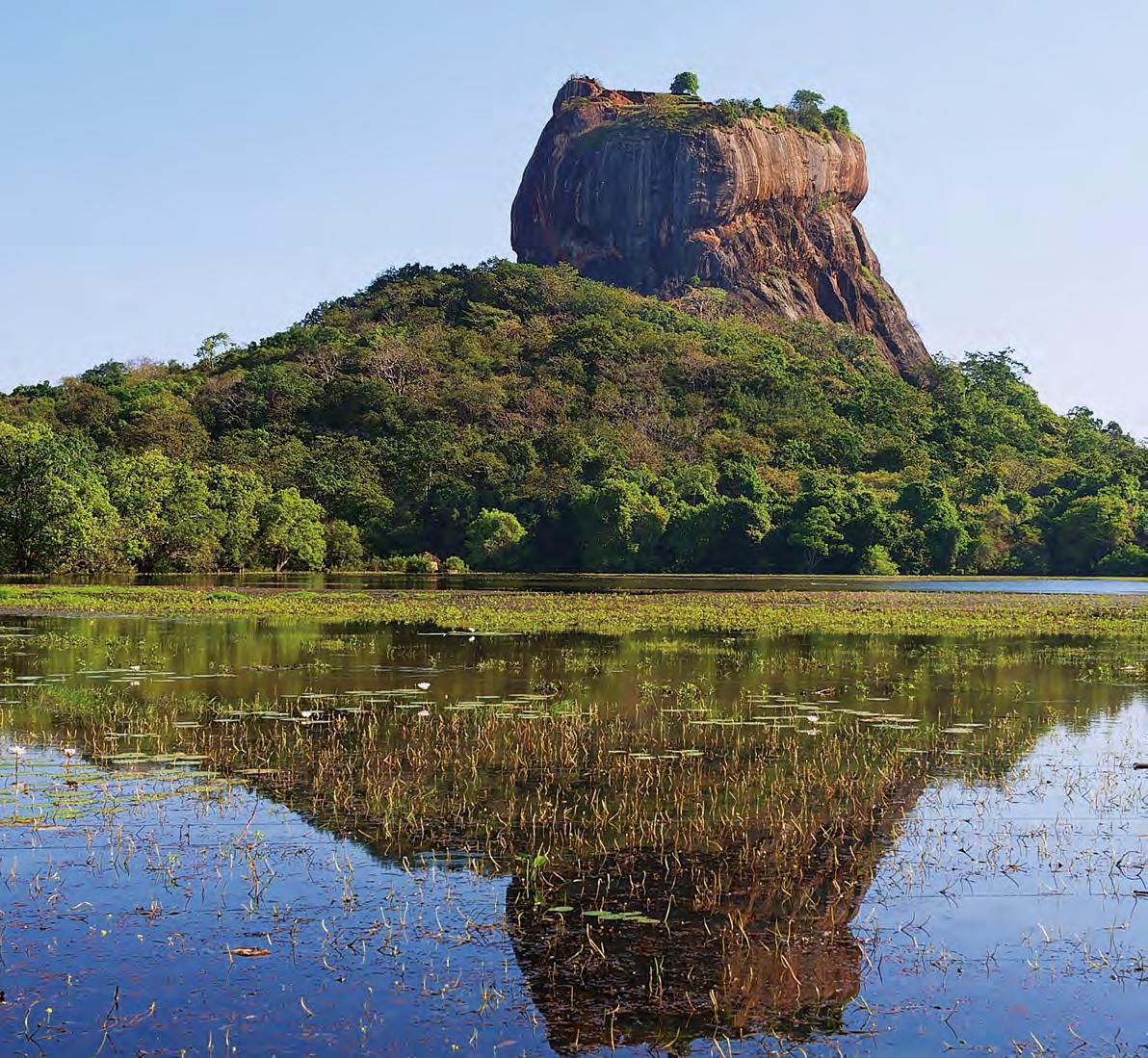
Whether it’s your first or fifth visit, you now have a whole host of new ways to experience Sri Lanka.
You can choose to pamper yourself at Anasa Wellness Resort, a boutique spa retreat tucked into the peaceful hill country. Or, for wildlife, you might opt to stay at Wild Glamping, an ecolodge in the remote wilds of Gal Oya National Park.
Sunrise on Sigiriya Rock is one of the country’s defining sights, and we’ve uncovered several new ways for you to enjoy the experience — cruising on a nearby lake where you’re on the only boat, riding in the basket of a hot-air balloon, or while eating breakfast atop nearby Pidurangala Rock.
Away from Sigiriya, we can now arrange for you to go whale watching on a luxury catamaran and introduce you to a tea planter for a stroll through the fields of Nuwara Eliya. Contact our Sri Lanka specialists on 855-753-5313.
We believe in the power of small, responsible decisions that add up to make a big difference. That’s why we’ve handselected a collection of stays and experiences across the world that help you get to know your destination in a more authentic way and leave a positive impact after you return home. You can choose from over 250 Responsible Choice options, from ecolodges powered by renewable resources in Malaysia to jaguar conservation tours in Brazil. We’ll be expanding our offering throughout the year so you can opt for even more travel experiences that go the extra mile. Learn more about our Responsible Choice collection at: www.audleytravel.com/about-us/responsible-travel.

Situated at the base of the cloud-kissed Arenal Volcano in Costa Rica, the newly renovated Arenal Pool Casitas at Nayara Gardens are a serene haven. Fling open the doors to the wide deck and slide into your private plunge pool as you’re serenaded by the sounds of birdsong in the rainforest that surrounds you. You can spot monkeys clamoring in the trees overhead, join a birdwatching walk at dawn to see toucans, or head out after dark to scout for red-eyed tree frogs. Contact our Costa Rica specialists on 855-320-9419.
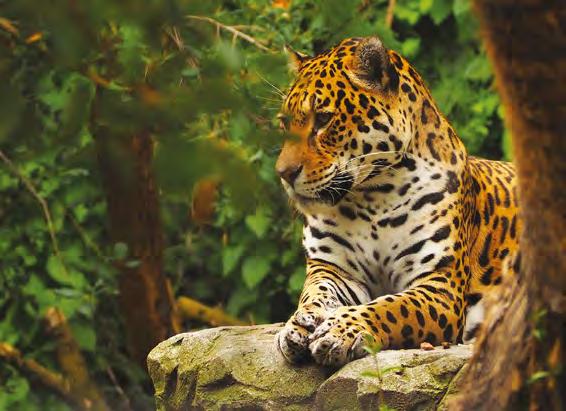

Should you wish to peel yourself away from Thailand’s pristine Phuket beaches, you can venture into the island’s interior to indulge in a sustainable farm-to-table feast at Jampa Restaurant. Before you sit down to your thoughtfully crafted seven-course meal, you’ll head out to the farm to see just how fresh the ingredients are, plucking a sun-ripened garnish or two as you go. The menu changes seasonally, but you might try coconut river prawns, wild-pepper veal, and honey-sweetened quince. Contact our Southeast Asia specialists on 855-827-3440.
Two camps in Tanzania’s Serengeti National Park have introduced new private-stay options, providing an exclusive space for families or groups of friends to enjoy during their safari. Asilia’s Namiri Plains in the east of the park and Sayari Camp in the north have each welcomed two of these spaces, called the Retreats, which come with two en-suite bedrooms, wraparound decks, and a pool area to share between them, as well as private guides and safari vehicles, a dedicated chef, and a host who can help plan your time. Contact our Tanzania specialists on 855-629-7568.
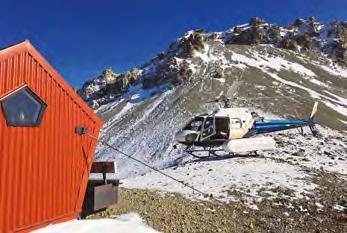
At 2,072 m (6,798 ft) above sea level and only reachable by helicopter, the high-altitude Bad Decision whisky hut might be the most exclusive place for a tipple in New Zealand. Getting here is part of the adventure. From the Mackenzie Helicopters base in Lake Tekapo, you’re whisked skyward over the snow-covered Southern Alps with views of Aoraki/Mount Cook in the distance. Land at the little red hut and sample fine whiskies, or another drink of choice, while taking in panoramic mountain vistas. Contact our New Zealand specialists on 855-775-6388.

One of the best ways to experience a new culture is to live it firsthand. Our specialists have chosen four homestays designed to immerse you in local tradition and hospitality.


Why unpack here?
A 400-year-old fortified manor house tucked into Puglia’s sun-drenched countryside, the Masseria Salamina is a working farm that’s run by the De Miccolis Angelini family. The spacious rooms are decorated with richly upholstered furniture, textured wallpapers, and oil paintings. Many also boast private terraces. The best bit?
You can indulge in tastings of the farm’s olive oils, sample Apulian wines, and take cooking classes with Chiara, the family chef. She also designs the restaurant’s menu, which features farm-tofork cuisine. Ready to check in? Contact our Italy specialists on 855-293-4890
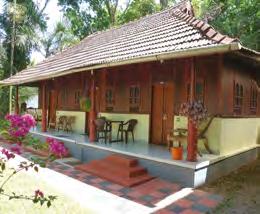
Why unpack here?
Professor Jose and Sinta Alilakuzhy give a warm welcome to guests at this riverside farm nestled in the spice belt of Kerala. A stay here offers a glimpse into the couple’s commitment to sustainable agriculture. Your visit will be remarkably eco-friendly, from the solar water heater to the food straight from their farm. The best bit?
The Alilakuzhys offer a wide range of local experiences. You might take walks to explore the village or temples, wander amid the fragrant spice trees, ride a bamboo raft on the river, or take a cooking class. Ready to check in? Contact our India specialists on 855-533-6243

Why unpack here?
At the foothills of Borneo’s tallest peak, Mount Kinabalu, lies a small village blanketed in rice paddies and fruit orchards. Here, you’ll stay in a simple guest house hosted by a local family from the Indigenous Dusun community. During your stay, you’ll get a closer look into local crafts, fauna and flora, and farming practices. The best bit?
Besides rice, the local area is also ripe with rubber trees. After an evening of home cooking, you’ll wake up to hike to one of the nearby plantations, where you can try your hand at tapping for sap. Ready to check in? Contact our Southeast Asia specialists on 855-827-3440

Why unpack here?
Watching over the geothermal town of Rotorua from the slopes of Mount Ngongotahā, City Lights Boutique Lodge has just three en-suite B&B rooms. Owners Grace and David live on site and are passionate about sharing their corner of New Zealand, whether you want to explore Māori traditions or soak in a hot spring. The best bit?
You can meet (and feed) the five resident alpacas that spend their days grazing right outside your room. At dusk, sit out on your private patio and gaze out across Rotorua as its lights twinkle into view. Ready to check in? Contact our New Zealand specialists on 855-775-6388

Lions and hyenas battling in the dark using just sound, baby caimans communicating from within the egg, birds mastering the art of mimicry — Secret World of Sound with David Attenborough decodes the noises of the animal kingdom. Streaming this spring

In her memoir, Butterflies In My Soup, Audley client Sylvia Bowley takes us back to the 1960s when she decided to push aside society’s pressures to settle down and instead embarked on a new life as a young teacher in Tanganyika (present-day Tanzania). Out now.

From Spartan warriors to the world’s earliest artworks, The Ancients with historian Tristan Hughes delves into our distant past, shedding light on millennia-old individuals, civilizations, and events from across the globe. Available on most podcast platforms.

Timeshifter® is a scienceinformed app designed to help you beat jet lag. With a subscription, you can access personalized plans for sleep, light exposure, and caffeine consumption as you move through time zones. Available on Android and iOS.
Three of our specialists share finds from their recent trips
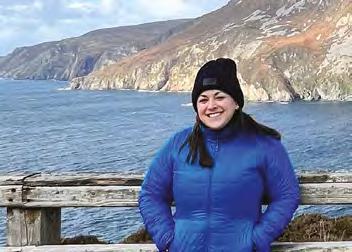
Visited by Lily
‘For me, Ireland is always about the people. On my most recent visit, I met Tracey, a baker who taught me to make soda bread in her rustic farmhouse. Another highlight was lunch with Maureen and Muiris, a retired couple who welcomes visitors into their home in Cobh. You’ll share dishes like cheesy potatoes and banoffee pie as they regale you with tales of life in an Irish town.’ Inspired? Contact our Ireland specialists on 855-653-5623.

Visited by Sydney
‘Uruguay’s petite size is part of its charm as it’s easy for you to get around. Venturing to the countryside to stay at the Narbona Wine Lodge on the shores of the River Plate felt like stepping back in time. Besides the excellent wine, I was blown away by Uruguay’s gastronomy, from flavorful steaks (the country has more cattle than people) to fresh seafood.’ Inspired? Contact our South America specialists on 855-244-6934.
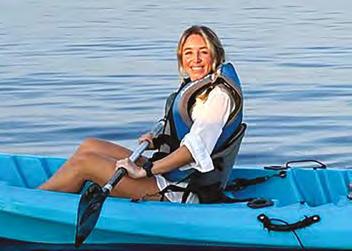
Visited by Jess
‘Cruising around the Maluku Islands with Aqua Blu, you’ll hardly see any other visitors. While there, I sipped sundowners on a pristine atoll, watched pilot whales zip right past my boat, and kayaked around an active volcano. One day, it rained and the sweet scent of nutmeg filled the air, reminding me why the archipelago became known as the “Spice Islands”.’ Inspired? Contact our Southeast Asia specialists on 855-827-3440
SAPA
Walk: Set off from your peaceful hillside ecolodge to hike through rice terraces, mist-shrouded valleys, and past jungle-fringed waterfalls. En route, you’ll meet the Red Dao community and learn about their intricate embroidery techniques.

Trekking through expansive cave networks, cycling around former royal houses, and cruising along a forest-fringed stretch of the Mekong River — Vietnam’s diverse landscapes lend themselves to equally diverse modes of transport. We share some of the best ways you can move through this elongated country.

LAN HA BAY
Sail: Pass by the limestone karsts of Halong Bay aboard a junk, a modern take on traditional Chinese sailing boats. Then, cruise to the quieter Lan Ha Bay to spend a night or two on the water.

NINH BINH
Walk & Sail: Visit 10th-century temples in Vietnam’s ancient capital of Hoa Lu. Then, climb to the top of Mua Cave for panoramic views of the sheersided karsts jutting from the open fields below, before relaxing on a gentle sampan ride along the river.
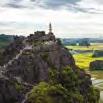
PHONG NHA-KE BANG NATIONAL PARK
Walk: During treks through the park’s intricate network of caves, you’ll descend into a mysterious world of subterranean rivers, stalactites, and echoing chambers — often illuminated by your headlamp alone.
THE MEKONG RIVER
Sail: Take in rural life along the Mekong on a cruise that passes by small farming communities and floating markets. Opt for a grand voyage in a luxury cruise-ship suite or choose a more intimate experience aboard a private wooden sampan.


MAI CHAU
Walk: Spend a day or two trekking with Avana Retreat, a luxury stay that aims to preserve the area’s natural beauty and heritage. Walk through tangled bamboo forests and past wooden stilted villages, before sitting down for a mountaintop picnic.
HUE
Cycle: On a gentle cycle through the rural outskirts of Hue, you’ll stop off at traditional houses that were once home to royalty and high-ranking mandarins. Each timber-framed house sits among formal gardens, providing a moment of stillness before you pedal to the next one.
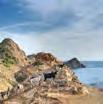

DA NANG TO QUY NHON
Train: Setting off a short drive from Hoi An, The Vietage takes you on a scenic train journey from the city of Da Nang to the lesser-visited coastline of Quy Nhon, showcasing Vietnam’s quintessential rural landscapes along the route.

BEN TRE
Walk, Cycle & Sail: Venture through the rural region of Ben Tre via an assortment of transport. In this gateway to the Mekong Delta, you’ll experience some of the traditional industries that flourish along the river, including shipbuilding, coconut farming, and rice-cake making.
Slow down and linger over coffee in a cafe only locals know. Enjoy Michelangelo’s David without waiting in line, guided by your own private art expert. Explore the Colosseum and Forum away from summer crowds. Indulge in a wine tasting at a family-run vineyard during the grape harvest. Take a food tour through the small canals of Venice while they’re quiet. Welcome to spring and autumn in Italy, when la bella vita tastes that much sweeter.

Inspired?
Contact our Italy specialists on 855-293-4890.
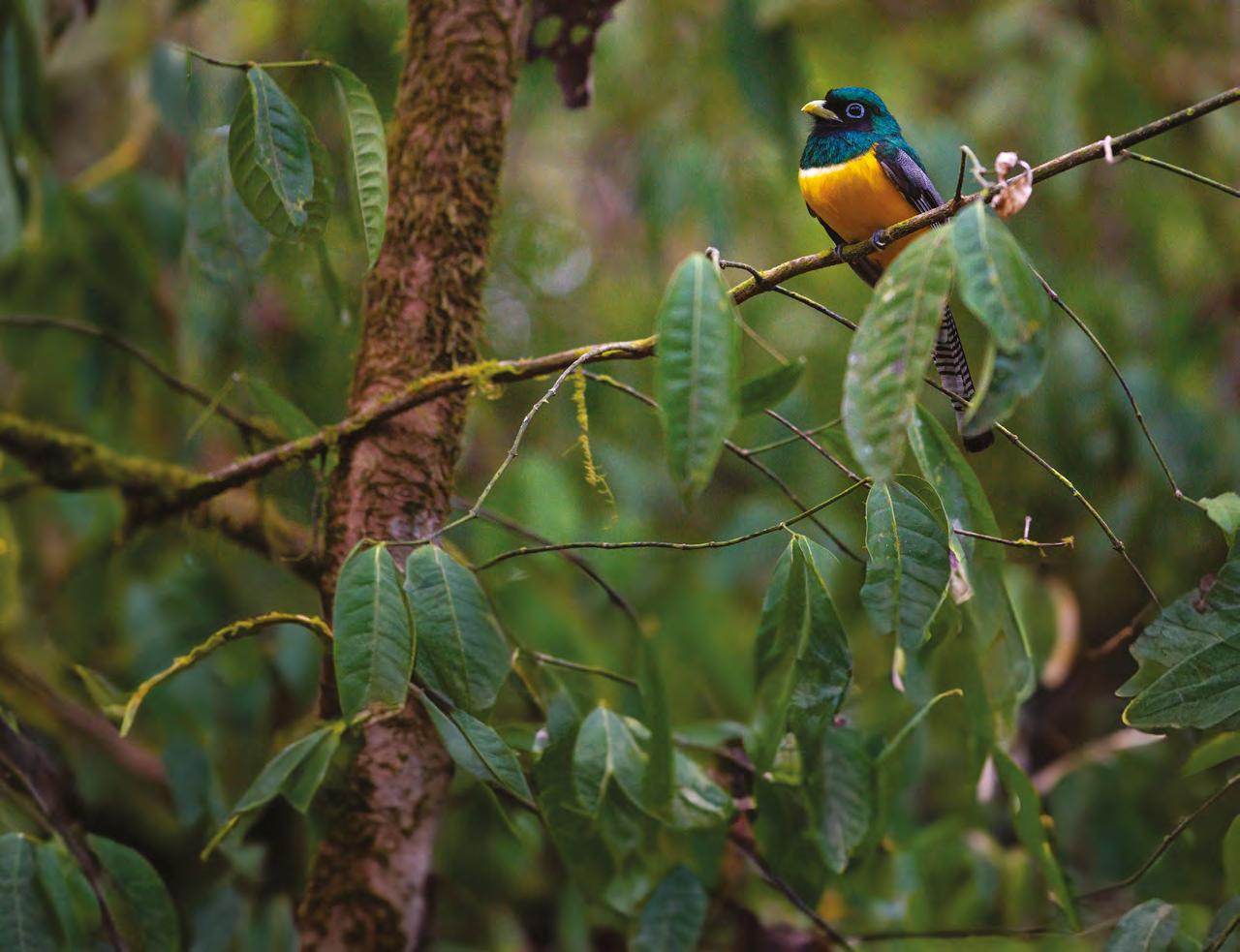
From spontaneous summer getaways to longawaited showstopper trips, our travel experts help inspire your travels for 2024 and beyond, whether you want to go soon, later, or plan ahead.

Chloe is a member of our Global Travel Team. With a wealth of destination knowledge, Chloe and her team are always on hand to help narrow down your trip ideas before connecting you with a dedicated country specialist.
The best travel moments require a delicate balance between place and time. It can be tricky to pin down where to go and when, while also getting ahead of the rest to secure your ideal stays and experiences. So, if you’re yet to plan your 2024 trip, let me help you out. I’ve chosen nine destinations for the year ahead based on when you might want to travel, and I’ve brought in nine of our specialists to reveal how you could explore each one, from wildlife spotting in Costa Rica to outdoor adventures in New Zealand.
Chloe says…

Flexibility is key if you want to squeeze in a last-minute summer trip this year. But, with a little wiggle room around dates and hotels, you can still enjoy a trip that speaks to your passions. For wildlife spotting, I suggest Costa Rica. An indulgent trip with Mediterranean sun and gourmet cuisine? Try Croatia. Or, for high-thrills adventure, opt for the red-rock landscapes of the USA’s Southwest.



In June, fewer people are around, giving you a chance for more intimate wildlife encounters. Though it’s the start of rainy season, rainfall is sporadic and there are plenty of dry days, too. It’s also a great time for river rafting or for hiking to waterfalls, like La Fortuna in the Arenal Volcano region, where you can swim in the blue-green pool beneath the falls.
One of my favorite places to spot wildlife in the country is Corcovado National Park, on the Osa Peninsula. Teeming with life, this wildlife-rich park holds 2.5% of the world’s biodiversity. You might see everything from sloths and monkeys to tropical birds and big cats, like jaguars, pumas, and ocelots.
Staying in the remote rainforest that surrounds the national park, it’s not uncommon to be lulled to sleep by the ‘plink-plonk’ sound of tree frogs before being woken to the chatter of howler monkeys outside your room at dawn.
Sam’s favorite stay:
Lapa Rios, Osa Peninsula
Get me there:
See how many species you can spot on a wildlife-focused trip to Costa Rica.
View trip idea
855-320-9419

Early summer is one of the best times to visit Croatia (I also love visiting in autumn).
You’ll have plenty of blue skies and comfortably hot temperatures, ideal for beaches and boats, and the crowds won’t have reached their peak yet.
This time of year, I suggest skipping the Dalmatian Coast and heading north to Istria. A land of buttery sun and fertile hills, it’s the culinary capital of Croatia, and I can introduce you to some of the local truffle hunters, vintners, and cheesemakers. The medieval port town of Rovinj is an excellent base for exploring the area. In nearby Brijuni National Park, you can cycle to rocky beaches and explore Roman ruins and dinosaur tracks.
A two-hour drive from Rovinj, just over the Slovenian border, Ljubljana is far from any coastal crowds. You can wander through the city’s old town, admiring the many dragons adorning buildings, or drive out to Lake Bled, nestled in the Julian Alps.
Samantha’s favorite stay: Meneghetti Wine Hotel, Istria
Get me there: Explore Istria and Ljubljana on a trip across northern Croatia and Slovenia.
View trip idea
855-641-4881

The Southwest has so many national parks to choose from, particularly in Utah, making it ideal for last-minute adventure trips. Most people flock to Zion, so I suggest heading to Capitol Reef National Park and Moab instead. In these underappreciated alternatives, you’ll get to experience the Southwest’s sweeping red-rock vistas with fewer people around. In Capitol Reef, you can explore Marslike Cathedral Valley in a 4x4, go in search of 2,000-year-old Fremont-culture petroglyphs, and spend the evening admiring the constellation-lit night sky in a secluded corner of the park or beside the campfire as you toast marshmallows.
Moab is the USA’s adventure capital, but you can still explore it with a luxury twist. On my last trip, I hiked through Arches National Park with a private guide who welcomed me with a basket full of my favorite snacks and laid out a picnic lunch on the sun-warmed earth while we rested.
Mary’s favorite stay: Cougar Ridge, Capitol Reef
Get me there:
Visit the Southwest’s national parks on a trip taking in the region’s highlights.
View trip idea
855-749-1994.


Northern Tanzania’s Serengeti National Park is the country’s flagship safari area, but its popularity means you might struggle to secure a stay in its camps for this September.
A worthy alternative, in my eyes, is to take your safari south into Ruaha National Park. It feels more wild, remote, and untrammeled because the camps (and people) are spread out across vast distances.
I also love the variety of activities you can do in this region. Walking safaris are incredibly rewarding as you follow your expert guide through untrodden areas, pausing to observe animal tracks, plantlife, and smaller creatures like birds and insects. For an even greater sense of adventure, you could go fly camping
Chloe says…

Booking ahead for autumn will give you more stays and experiences to choose from — and a chance to bask in the sun even when summer’s over. You could go on safari in Tanzania, indulge in a little islandhopping in Indonesia, or take an overnight cruise on a New Zealand fiord.
here, sleeping in a mobile camp set up in a new location that you walk to each day. You could pair Ruaha with a safari in Nyerere National Park, where the Rufiji River means boat safaris are on the agenda — something you can’t do in many other parts of the country.
Gliding along, you might spot elephants splashing around to cool off, antelopes quenching their thirst while keeping one eye on the horizon, and hippos peering above the water’s surface.
Arista’s favorite stay: Ikuka Safari Lodge, Ruaha National Park
Get me there:
You could pair a southern Tanzania safari with time on Zanzibar’s beaches.
View trip idea
855-629-7568.





I always recommend September to November in New Zealand because it doesn’t feel as busy, the weather is warming up, and there’s better availability, which is key for boutique hotels and B&Bs.
The further south you go, the more climatic the scenery gets. Surrounded by lofty peaks and set on a lakeshore, Wānaka is a good example of this, as are the many fiords that carve into the South Island’s untamed western shores.
To help you fully appreciate these immense landscapes, I could book you onto an overnight cruise on Milford Sound, where cliffs rise from the inky-blue
water of the fiord and waterfalls stream down the valley sides in veil-like wisps or thundering torrents.
Or, to feel a real sense of welcome isolation, head to the quieter stretch of water known as Doubtful Sound, where you might see penguins, dolphins, seals, and whales swimming in the wide fiord as you sail through its many inlets.
Matt’s favorite stay: Lakeside Apartments, Lake Wānaka
Get me there: Hop between the highlights that interest you most on a self-drive trip.
View trip idea
855-775-6388.

If you’re planning an end-ofsummer or early autumn trip to Southeast Asia, you can’t go wrong with Indonesia. While the northern half of the region is mostly wet and cloudy, Indonesia experiences beautiful dry and sunny days.
As the summer crowds taper off, you’ll have a wider choice of hotels and experiences. Many people choose to focus on Bali, but I think Indonesia has so much more to offer, particularly if you like to go wildlife spotting.
I suggest starting in Java, where you can visit the UNESCO-protected temples of Borobudur and Prambanan, before heading out to Indonesian Borneo to spot orangutans in the forests. You’ll stay on a private boat where fireflies twinkle along the river at night. Demand is high, so it’s worth booking early. The same goes if you want to board a private boat that takes you to see Komodo dragons.
Then, wrap up your trip by stretching out on a secluded segment of Bali’s sugar-softsand beaches.
Jack’s favorite stay: Wapa di Ume, Bali
Get me there:
You can spend time in Java, Bali, and Borneo on a varied trip across Indonesia.
View trip idea
855-827-3440.

Chloe says…

Some trips need to be planned well in advance because the destinations feature on so many people’s wish lists. From wintry snowscapes in Japan to traditional homestays in India and active coastal experiences in South Africa, these trips are worth waiting for until the end of the year (or even beyond). And, despite the widespread popularity of these places, our specialists can help you see them in a way that’s personal to you.

December to March brings comfortable days and cooler nights to India’s Golden Triangle. Most people visiting the country for the first time explore the cities that make up the three eponymous points — Delhi, Jaipur, and Agra (home, of course, to the Taj Mahal). A trip limited to the triangle is a manageable serving of the sprawling cultural feast that is India.
I always suggest taking a walking food tour of the old city when you visit Delhi. What you eat will depend on the particular day — you might sample lamb kebabs seared on a grill, smoky chappatis cooked in a clay oven, or kulfi, a sweet frozen dairy treat that’s served on a stick (don’t worry, it melts slowly, thanks to its richness).

I love the food, but the highlight for me is the chance to meet the people of the city. I’ve taken this tour several times and met a fascinating roster of residents: the local millionaire who kept his money in an actual mattress; the woman shopping for a sari in the bridal market; a cook who’s spent 20 years frying up aloo tikka (potato croquettes) in the same stall.
If you enjoy connecting with local residents, I also suggest taking time to visit more rural areas like Samode. Staying here gives you the chance to really soak up the village atmosphere and glimpse the everyday life of the Rajasthani people. It’s also a much more relaxed atmosphere, making it a respite from the urban hubbub.
Many of my favorite stays are in the Golden Triangle, too. You might opt for a rural fort-palace, where you’ll stay with a
family who’ve lived there for hundreds of years. If you’re in the city, you can stay at an elegant townhouse known as a haveli. Wherever you choose, you’ll be welcomed as an honored guest, and how you spend your days there will be tailored to your interests. You might decide on a guided village tour, private cooking classes, farm visits, or, in some locations, 4x4 drives through the green countryside.
Niall’s favorite stay: Dev Shree, Deogarh, Rajasthan
Get me there:
Delve deeper into India’s Golden Triangle on a trip taking in its more rural side.
View trip idea
855-533-6243
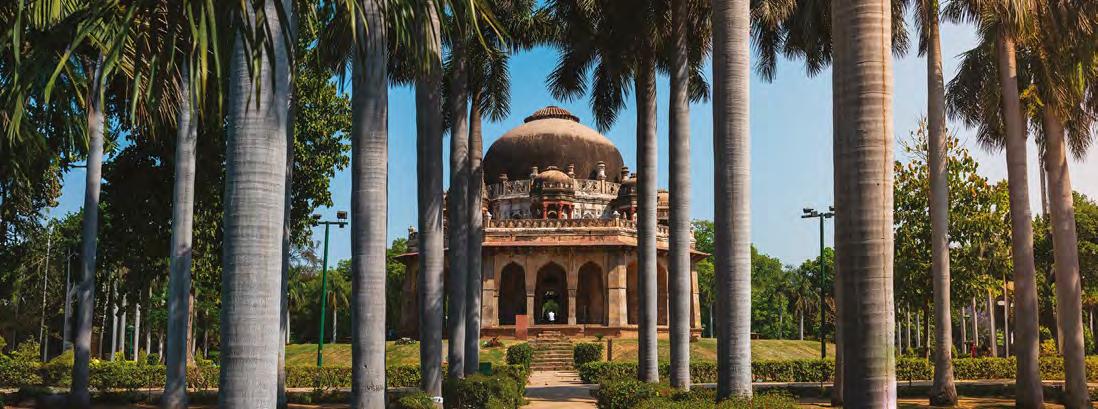

Early December is an excellent time to visit Japan, just after the November rush. If the weather’s warm, you might catch the tail end of the autumnal foliage — a seasonal display that draws slightly fewer crowds than spring’s cherry blossoms, but is similarly stunning. And, in the north, you can embrace the country’s many wintry pleasures. You could go to Yudanaka to see the renowned Japanese macaques soaking in the hot springs at Jigokudani Monkey Park, visit Kushiro to watch the mating dance of red-crowned cranes, or simply stay at a small rural ryokan and admire the snowy landscapes from the comfort of a steaming
natural onsen (hot spring).
If you plan to travel during the last two weeks of December, don’t leave it too long. New Year’s Day is a big holiday in Japan and many of the best hotels and experiences have limited availability because staff members take time off to celebrate with their families.
Adam’s favorite stay: Kokuya Ryokan, Yudanaka
Get me there:
You can explore Hokkaido’s wintry side on a trip focused around the island.
View trip idea
855-773-5598.

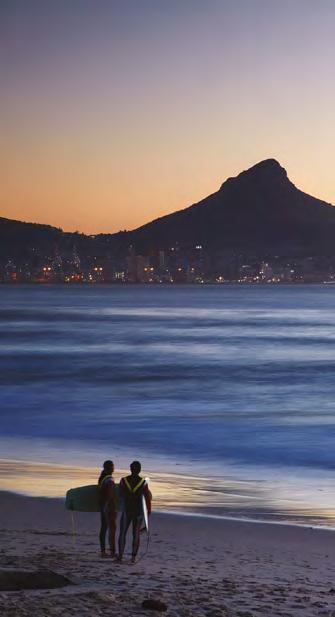
We’re thrilled to announce that three specialists featured in this article have once again been recognized by Travel + Leisure as A-List travel advisors. Mary, Niall, and Jack would like to thank their clients for their continued support and look forward to creating more meaningful travel adventures over the coming year.


Temperatures soar in South Africa’s Western Cape from December to March, though the ocean breeze keeps things comfortable. It’s a popular time for visitors, especially during the festive season, so I recommend starting to plan now if you want to take advantage of the dry, sunny days.
I find it’s a great time to explore the coast, spending the day with a private guide around the Cape Peninsula. You could learn to surf, spot African penguins waddling on the rocks as you paddle a kayak, or hop between beaches and play games on the sand.
If you like being in the thick of it, Cape Town thrums with activity in December. I suggest exploring the city’s food scene on a walking tour of its multicultural districts. And, if you’re an early riser, you could hike to the top of Table Mountain with a private guide, who'll take you along less-trodden trails.
Then, I recommend driving north into the Cederberg Mountains, an area that remains relatively under the radar. You’ll see ancient San rock art etched into the sandstone and spot wildlife like Cape mountain zebras, bateared foxes, hartebeests, and ostriches.
Harriet’s favorite stay: Bushmans Kloof, Cederberg Mountains
Get me there:
Spend time in Cape Town and the Cederbergs on a South Africa self-drive trip.
View trip idea
855-320-9545.
Cascading rice terraces, spiritual agriculture, and carefully spiced cuisine — Bali guide Eni describes a typical day exploring Indonesia’s best-known island through the eyes of a local.
Aguide since 1997 and recipient of a 2023 Audley Guide Award, Ni Made Angreni — known as Eni — finds great meaning in sharing her culture, traditions, and Bali’s natural beauty with each visitor she welcomes to her homeland. She lets us in on how you might spend the day together in the rice terraces of UNESCO World Heritage Site Jatiluwih.

Iconsider guiding to be a dharma — my duty. It’s much more than just a job.
I’m Balinese and so are all my ancestors, so I take great pride in sharing my culture and traditions with my guests and put a lot of thought into how I can help them get the most out of their trip. I say to people, ‘Let me know what sparks your curiosity, and I’ll craft our days around that.’
Bali is a small island, but it contains so much beauty. The mountainside rice terraces of Jatiluwih are a personal favorite spot of mine. Stretching out for miles, the fields wrap around the base of Mount Batukaru in great swathes of vibrant green — here, it’s clear everything
revolves around nature.
For the time being, the terraces don’t attract the huge crowds that the paddies near Ubud do, which is why I’d focus our time there.
Cycling through the area is a wonderful way to soak in Bali’s nature and rural culture, and exploring by e-bike will help us cover more ground.
I’ll pick you up just after breakfast and we’ll pass through small Balinese villages as the morning bustle begins.
As you’ll see, there are temples around almost every corner. Bali is predominantly Hindu (unlike the rest of Indonesia, which is mostly
Muslim) and every village has three temples: one for Brahma, one for Vishnu, and one for Shiva — our three most important gods.
Before we arrive at the terraces, I like to make a stop at the 11th-century Batukaru temple, where we’ll also pick up our e-bikes. It’s one of our pura kahyangan jagat. These are the nine directional temples located in the mountains, which are the most sacred places on the island because they’re where our gods live.
Standing in front of the temple’s tall, ornate candi bentar (split entrance gateway), I’ll teach you about its history, spiritual significance, and how it features in the annual Hindu
pilgrimage up Mount Batukaru, an extinct volcano and Bali’s second-highest peak.
Then, we’ll set off along a scenic path past dense jungle, rural villages, and, of course, the Jatiluwih rice terraces. It’s impossible to miss them — they’re all around, rippling down the slopes of the mountain’s foothills. We’ll cut right through the fields on our bikes and pause to take in the panoramic views.
When you visit will determine what you see. Just before harvest, which usually happens twice a year, the fully grown plants shoot up in their thousands, creating a sea of emerald. Outside those times, it’s not so green, but the pools

of water nourishing the early shoots shimmer in the sunlight, creating a completely different effect on the land.
Whenever you go, you’ll see farmers busy at work, whether they’re planting new crops, hauling golden bundles across the fields, or drying rice grains under the sun.
While we pause, I’ll also take some time to teach you about the traditional irrigation system that waters the rice: subak. It’s this technique, practiced since the 9th century, that has earned Jatiluwih its status as a UNESCO World Heritage Site.
In Bali, we believe in Tri Hita Karana — harmony between people, nature, and God. This principle is reflected in subak
and it helps us to yield the best crops. The water comes from the local water temples and flows through a succession of rice fields via a system of canals and tunnels — it’s a cooperative effort between temple priests and local farmers.
Even with the added help of an e-bike, I find the journey does work up an appetite, so we’ll wrap up our visit with lunch at a local restaurant. It’s always fairly busy, but for good reason: you’ll get to enjoy your meal with views across the terraced landscape. Despite the hubbub, I find it very calming.
Bali’s fragrant cuisine
Speaking of food, there are so many Balinese dishes to try, so
on our way back to your hotel, I’ll share my recommendations for dinner.
I always encourage a trip to Ibu Oka in Ubud, an authentic restaurant that serves up some of the best babi guling (suckling pig) in town. The skin is crisp, while the meat underneath melts in your mouth.
Another place I’d put high on your list is Café Lotus, a traditionally designed Balinese restaurant overlooking Pura Taman Kemuda Saraswati, a temple otherwise known as Ubud Water Palace. It has a long lily pond leading up to the main temple building, which is lit up at night, making for a lovely atmosphere as you dine.
The food here is authentically Balinese and prepared with ingredients sourced from the island. I suggest trying the ayam betutu, a richly spiced roasted chicken dish with steamed rice.
After dinner, you can also enjoy Balinese dances performed right in front of the temple. It’s the ideal way to end a day of exploring the rice terraces, bringing together the beauty of Bali’s nature with the beauty of our culture.

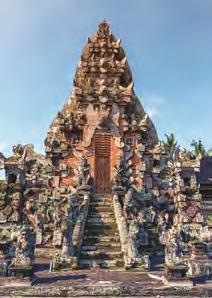
Mount Batur trekking
Caldera views, volcanosteamed snacks, and a lava tunnel await on this scenic trek to Mount Batur’s summit.
Inside Ubud’s temples
Delve deeper into Bali’s spiritual side as you wander around centuries-old temples and witness a Hindu water purification ceremony.
Ocean views & seafood
Head to the south coast to visit one of Bali’s oldest temples, perched on the cliffs. Then, stroll along a secluded beach at sunset before tucking into grilled lobster, squid satay, and red snapper at Jimbaran Bay.
Get me there:
You can visit Bali as part of a wider trip to Indonesia, including time in Jatiluwih and Ubud.
View trip idea

Wild natural vistas, hyper-local cuisine, or animated pop culture? Our specialists suggest three ways to experience this nuanced country inspired by recent trips they’ve created.

Japan is complex. This is, after all, a country where ancient shrines and wild landscapes live cheek by jowl with futuristic cities and ephemeral popculture fads. And, in our experience, each visitor wants to explore a different side. You might want to dive deeply into the traditional cuisine or be dazzled by the neon lights. To inspire your own planning, we sat down with three of our long-time specialists to examine recent trips that explore Japan’s many facets.


Inspired by: A family of four who wanted a trip that appealed to all their passions. It needed to include plenty of Japan’s pop culture, especially anime and manga, as well as time exploring the country’s ultra-modern engineering. And lots of sushi.
Family trips to Japan are always a balancing act — I have to choose experiences that match everyone’s varied interests, while also scheduling days so adults and children alike have down time. With that much going on, it can get overwhelming. A good way to counter that is to limit the places you visit, like my clients, who focused purely on Tokyo and Kyoto. I also plan the experiences so they flow well.
While your family is in Tokyo, I suggest taking a guided visit to Tsukiji Outer Market at breakfast. This was once the city’s main trading place for fish, and even today it’s packed with seafood stalls and eateries. You can enjoy a breakfast of local delicacies like rich tuna sashimi, fish roe, and tamagoyaki (omelettes with dashi).
Tsukiji is far from other sights, which means sometimes visitors don’t want to take the time to explore it. But, for someone fascinated by pop culture and high tech, it pairs well with an afternoon spent exploring Odaiba. Located relatively close to the market, this manmade archipelago is a veritable playground for anyone who wants to delve into Japan’s cultural obsession with cutting-edge tech. A highlight is Miraikan, a museum of emerging technology. If you’re passionate about Japan’s manga and anime culture, I can arrange a private drawing class
at Tokyo’s international manga school. (Manga is a narrative art form like graphic novels.) The instructors there can tailor the lesson to suit almost anyone, from accomplished artists to amateurs who’ve never sketched before.
After the class, you’ll be close by to Nakano, an area renowned among the otaku (a Japanese word that means, loosely, geeks). Here, you can peruse wall-to-wall collectibles, memorabilia, and art based around both manga and anime (animated art).
Kyoto is renowned for traditional crafts, but delicate arts like origami and kimono wearing might be too tame for families with highenergy teens. That’s why I suggest including a samurai experience here instead. You’ll all change into traditional samurai clothing and practice the right way to bow, learn about the samurai lifestyle, and train on traditional samurai weapons including a katana (a curved sword).

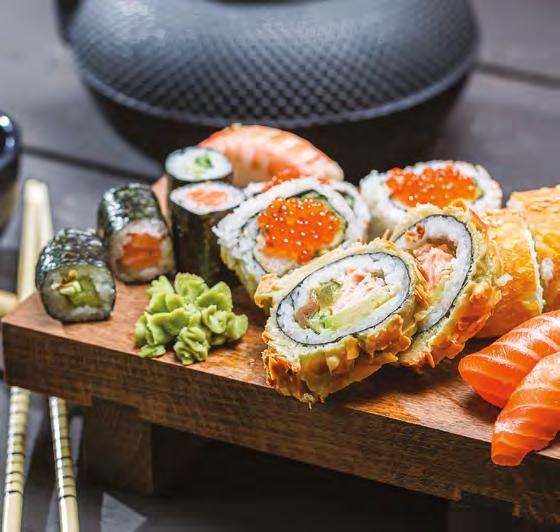


Inspired by: A solo traveler who wanted to focus entirely on tasting Japan’s hyper-local cuisine.
Almost everyone who visits Japan wants to try the food, but some trips take this to a whole other level. Instead of a list of cities or experiences, you might have a long list of certain dishes and restaurants you want to try.
Like Italy or France, Japan’s cuisine is remarkably hyper local, varying from island to island and village to village. You’ll find delicate, refined seafood in the coastal city of Kanazawa, known

for its reverence for traditional crafts, where I suggest joining a class to learn the delicate art of sushi making, covering several sushi varieties and techniques.
For more down-to-earth fare, head to Osaka, a city known for its boisterous nightlife. Here, you can take a guided evening walk through Tenma, a district packed with bars and casual eateries. You’ll rub shoulders with locals as they unwind over a beer and platefuls of kushi katsu, deep-fried skewered meat and vegetables in a panko coating.
Japan also boasts a wide range of restaurant styles, especially in Tokyo. You might enter the hushed elegance of a Michelinstarred eatery, or spend an evening
hopping between casual izakaya (pubs). And, in Yakitori Alley, you’ll find tiny restaurants huddled together under a train track, serving meat seared on hot grills.
For exquisite kaiseki, I suggest a stay at one of Japan’s rural ryokan. Kaiseki are elaborate multi-course meals crafted around seasonal ingredients — tender bamboo shoots in the spring or pale slivered chestnuts in the autumn.
I’ll also include introductions to the people who maintain Japan’s traditional culinary culture. Former chef Rory guides a tour that offers a detailed gastronomic introduction to the country. And Mac, an expert on Tokyo’s whisky scene, who leads an exploration of the best bars in the capital.
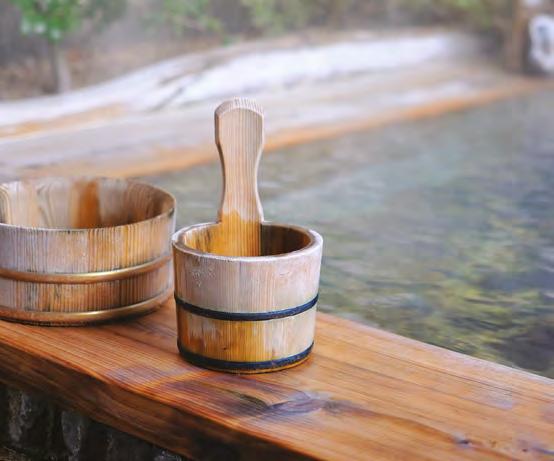

Inspired by: A couple who wanted to swap Japan’s urban bustle for its wild landscapes, venturing away from the usual spots.
Tokyo is often the centerpiece of a visit to Japan, whether it’s your first time or your fifth. I’ll admit that I blinked in surprise when my clients asked to skip the capital altogether in favor of the quieter countryside and coastal landscapes. The idea was to spend time appreciating the beauty of nature — what a Japanese poet might call kachou fuugetsu.
It’s hard to avoid Tokyo entirely — that’s where most international flights land — but after one night I suggest heading out to the Nihon Arupusu, known in English as the Japanese Alps. Here, you can hike along the Nakasendo Highway, a historic route that once ran between major cities — I particularly like the stretch between Magome and Tsumago. Shaded by soaring cedars, you’ll stroll in the footsteps of the Daimyo lords and their vast retinues who once traveled here.
While you’re in the mountains, the best place to stay is a classic
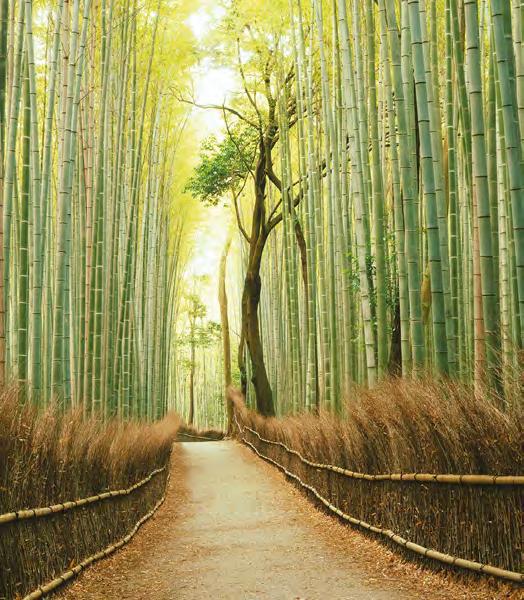
ryokan. These rural inns, with their open-air hot-spring baths, called onsen, are designed for you to immerse yourself in nature, something deeply cherished by the Japanese culture. In fact, Japan has been working to preserve natural landscapes for at least 1,000 years, which means you can enjoy kachou fuugetsu even in the cities.
To take advantage of this, stay in Kyoto’s Arashiyama district. It’s best known for its bamboo grove, but the whole area is replete with natural beauty. To get your bearings, I suggest a rickshaw tour. You’ll cover more ground than you would on foot, but the speed is still slow enough that you’ll have plenty of time to soak up the views. Along the way, you’ll see traditional houses, misty mountains, a forested gorge, and Nonomiya Shrine, the setting for The Tale of Genji.
While you’re in Kyoto, Hoshinoya Kyoto is perhaps the best place to indulge in views that have inspired Japan’s brush painters for centuries. You’ll arrive at this elegant hotel via boat, before being escorted into a world of softly lit rooms designed in the airy style of a 17th-century teahouse. There, your pavilion might look out over boats sailing along the Oi River or maple trees growing on the slopes of Mount Ogura.
Often, tours in Kyoto focus on history and crafts — in many ways, this is the heart of Japan’s ancient cultural traditions.
To get a glimpse of those traditions, and to continue your immersion in nature, you might take a walking tour of Kyoto’s gardens. You’ll appreciate the manicured landscapes tucked away inside the city’s temples as your guide explains design principles like shakkei, or borrowed scenery, which incorporates natural features like mountains and streams into the garden design.
Flight time:
Around 12 hours from Los Angeles to Tokyo; around 14 and a half from New York City. When to go:
Year-round, but we like March to May or October to November, when the weather is comfortable and you can enjoy festivals celebrating the changing seasons.
Start planning:
Whether you’re interested in cuisine, landscapes, or pop culture, we suggest planning now if you want to visit Japan in 2025.
View trip ideas
855-773-5598

Harvest moon & maple leaves
Visit in mid-autumn to experience Tsukimi, a festival devoted to the harvest moon. You could also enjoy momijigari — viewing the autumn leaves, including brightcrimson maples.

Cherry-blossom season
The much-awaited sakura (cherry-blossom season) prompts celebrations large and small across Japan. We advise planning early if you want your visit to coincide.
Fireworks & parades
You’ll come across matsuri, traditional festivals sponsored by a local temple or shrine. Most feature fireworks, parades, musicians, and dancers.
Snow & wildlife
Revel in the season on Hokkaido, one of the snowiest places on Earth, where you can see redcrowned cranes’ mating dances. Or visit Nagano to glimpse snow monkeys soaking in hot springs.

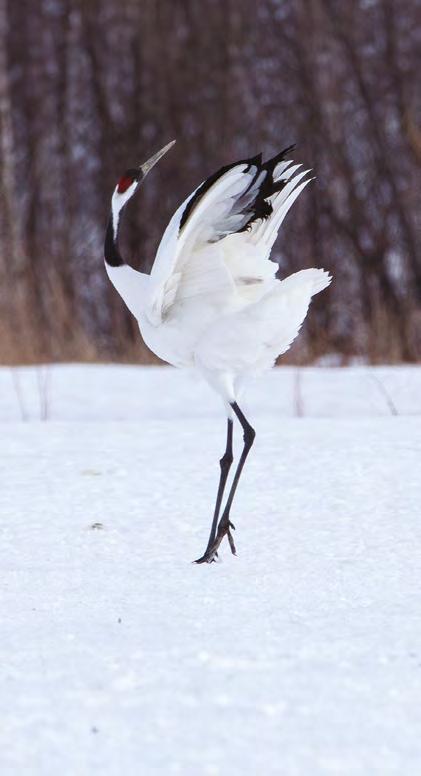
The four seasons (clockwise from top left) Cherry trees in Kyoto; traditional matsuri parade; red-crowned crane mating dance; maple foliage


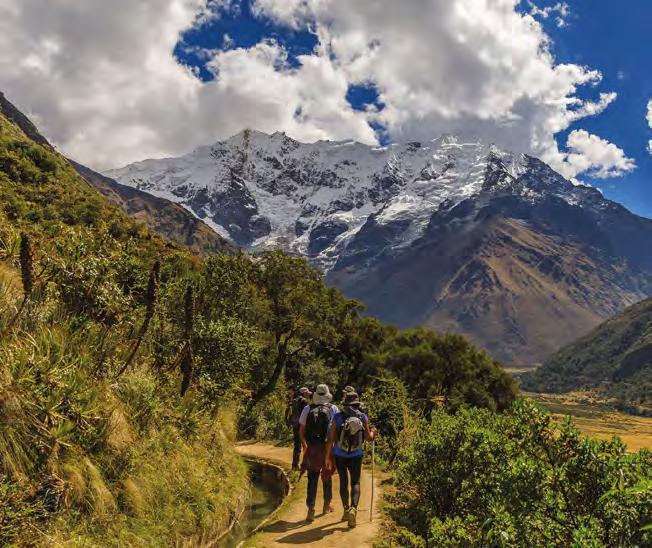

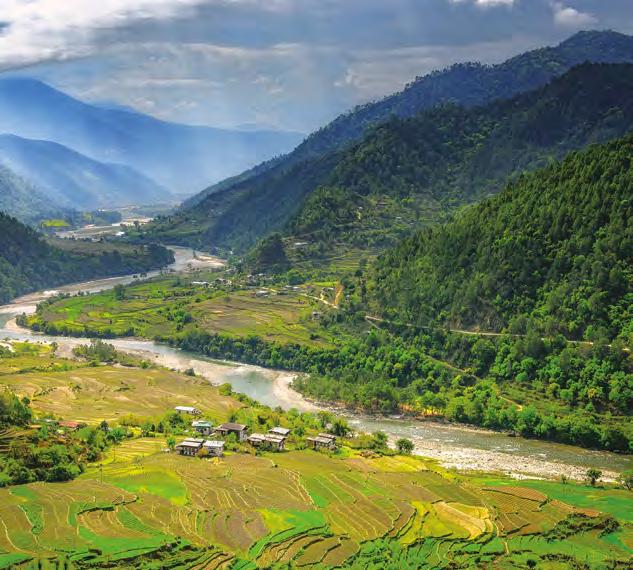
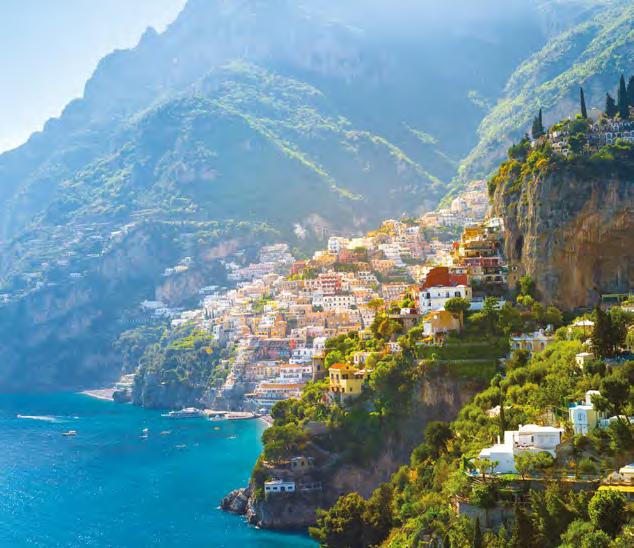
Prismatic lava fields, serene tea plantations, and Mediterranean views: our specialists recommend their favorite hikes across the globe.
Recommended by Jason

The newly opened Pekoe Trail winds through the jungles, forests, and tea plantations of the Sri Lankan hills. This isn’t a hike to challenge yourself — instead, it’s a tranquil way to experience the deepgreen calm of the tea country. Your guide will lead you along one of the trail’s 22 stages, which range from easy to moderate, pointing out the local flora and fauna, including some of the island’s brightly feathered endemic birds. As a bonus, you’ll be helping to support the villages dotting the path, which are usually bypassed by visitors. It’s slow travel at its finest.
Recommended by Amber

Until the 1960s, most travel in Bhutan happened along a central road. It fell into disrepair for a few decades, but has recently been reborn as the TransBhutan Trail. Hiking the full length would take more than a month, but you can easily spend a pleasant morning walking along a section between Thimphu and Punakha with a local guide. This isn’t a strenuous hike — instead, you’ll stroll along slowly, taking the time to soak up the views of the green valleys, cradled by distance-hazed mountains, as your guide tells you about natural history of the forest around you.
Recommended by Mareesa

In the highlands of southern Iceland, Landmannalaugar’s rainbow landscape instantly catches your eye. You can spend a couple of hours here hiking with a local guide through the dark, twisted rocks of lava fields and past steaming volcanic hills streaked green, orange, red, and purple. Your guide will explain what creates these vivid shades and the other geological formations you pass, and you’ll have time to take in the views as you go. Afterwards, I recommend soaking in the naturally heated stream nearby, whose shallow waters soothe weary muscles.
Recommended by Catherine

Dubbed ‘the back door to Machu Picchu’, this multi-day hike is a quieter alternative to the well-worn Inca Trail. The Salkantay Trek stands out for the varied landscapes you’ll encounter, with snowy peaks and glacial lakes descending into cloudforest and emerald-green jungle before you arrive at Machu Picchu. If you don’t have time for a full trek but still crave a challenge, consider hiking to Machu Picchu Mountain instead. The four-hour journey is steep in portions but worth it for the aerial vantage point of the fabled ruins that few others get to see.
Inspired? Contact our specialists on 855-237-4098
Recommended by Tom

Starting at the whitewashed lighthouse of Cape Naturaliste, this coastal path in the Margaret River region meanders past red-rock cliffs, sky-scraping karri forests, and fields of wildflowers. Stop to swim or surf at Injidup Beach or walk along the wide swathe of pure white sand on Kilcarnup Beach. Standing tall on a jagged headland at the confluence of the Indian and Southern Oceans, the Cape Leeuwin Lighthouse marks the end of the trek. Leaving the trail behind, it’s time for some well-earned wine tasting at a Margaret River vineyard.
Recommended by Caroline

Sheer cliffs that plunge precipitously into the sea, tiny terraced gardens blooming with roses, liquid golden sunshine, and the glittering blue of the Gulf of Salerno… I’ve seen a lot of landscapes, but the Path of the Gods on the Amalfi Coast is honestly my favorite. This moderately challenging trail begins in Bomerano, where you meet your guide. They’ll lead you along the clifftop trail, heading towards Positano, where you can end your walk with an indulgent lunch. Every step of the way, you’ll soak up the views that earn the route its divine name.
Blending modernity with tradition, Muscat offers an authentic insight into Oman’s tapestried culture before you venture into the mountains and deserts of its interior.

9AM
Sultan Qaboos Grand Mosque and the nearby Royal Opera House are both examples of exceptional modern architecture, drawing from styles across the Muslim world and throughout the centuries.
A privately guided tour of the two will immerse you in Omani culture and history from the get-go, so I’ll arrange for your guide to pick you up in the morning, just after breakfast.
Before stepping inside, I’d pause and spend a while in
the grounds, admiring the buildings’ imposing whitestone exteriors from a short distance. Both settings feel exceptionally spacious and palatial, especially backdropped against the azure Gulf sky.
Inside, more intricate styles start to shine through. The mosque is embellished with elaborate hand-woven carpets and highly decorative ceilings in an array of blues, greens, and gold. The opera house features dark-wood accents and motifs inspired by both Islamic and global art movements. It hosts classical ballets, as well as Arab music and dance shows.

1PM
Break for lunch at Al Angham, near the opera house, which offers a fine-dining twist on classic Omani fare.
The decor is true to local style and all the waiting staff are Omani, too, which is actually quite rare. I recommend trying the shuwa, a slow-cooked lamb dish marinated in a rich blend of aromatic spices.
3PM
After lunch, head to the coastal suburb of Qurm for a stroll along the beach and through the well-manicured park.
As the sun begins to sink, local families arrive to picnic beneath the shade of the trees, friends catch up in waterfront cafes, and spontaneous games of football spring up on the beach.
The Crowne Plaza is a lively spot for dinner and drinks — and you can buy alcohol here, if you wish. As for your hotel, I recommend staying at the elegant Chedi Muscat, whose design blends harmoniously with both contemporary and traditional Omani architecture.

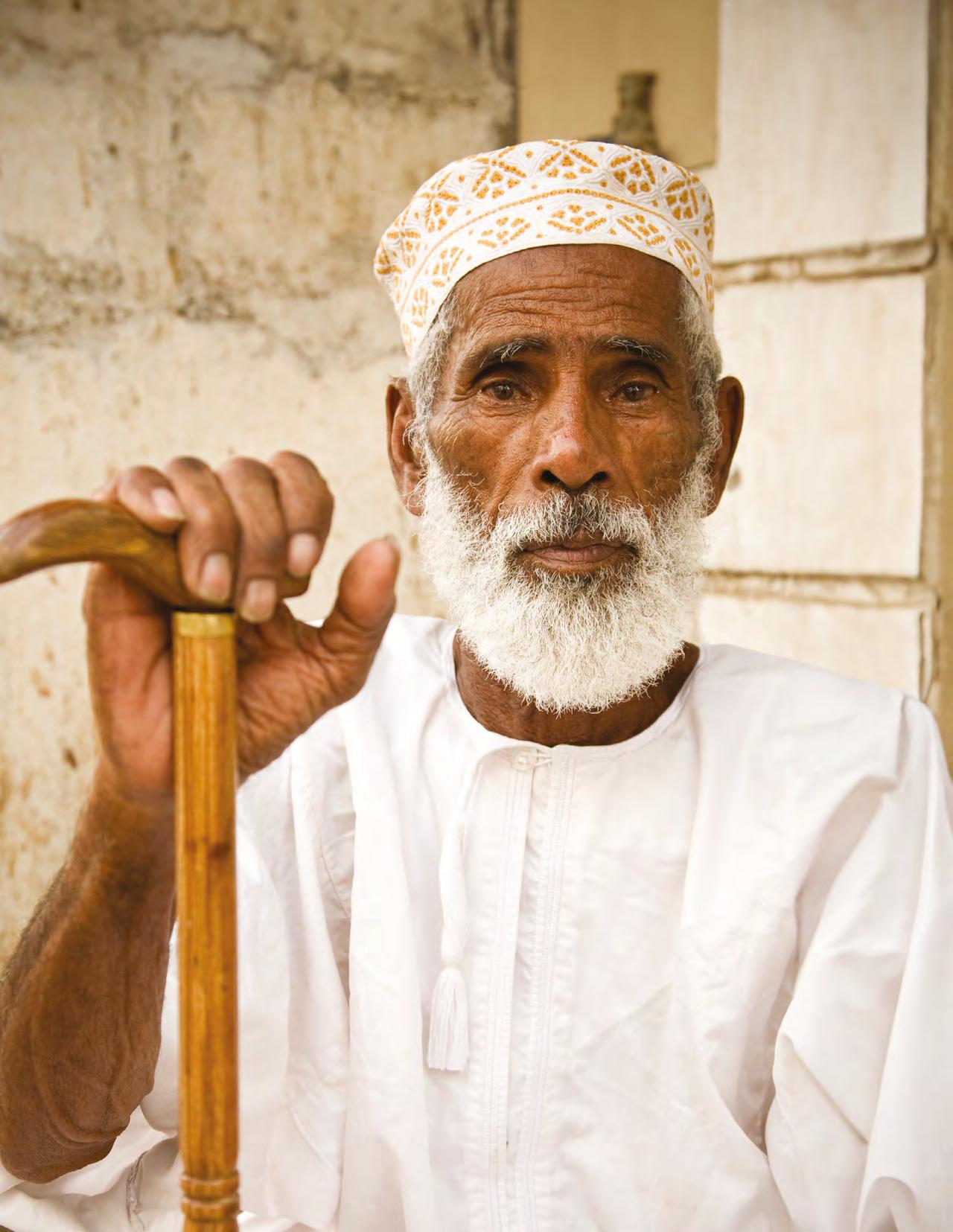

‘Muttrah Corniche feels like a setting from a Middle Eastern folktale — you almost expect Sinbad the Sailor’s


 Night and day (clockwise from top left) Sultan Qaboos Grand Mosque; lamps at a souq; coffee and dates; Shangri-La Al Husn; (opposite) Muttrah Corniche
MICHAEL SAYS
Night and day (clockwise from top left) Sultan Qaboos Grand Mosque; lamps at a souq; coffee and dates; Shangri-La Al Husn; (opposite) Muttrah Corniche
MICHAEL SAYS

This morning, you’ll head into historic Old Muscat, shielded from the rest of the city by craggy headlands and thick 17th-century walls.
A good place to start is at Al Alam Palace, one of the Sultan’s six residences. You can’t go inside, but it’s well worth a peer through the crested iron gates.
The cube-shaped palace is strikingly modern-looking with a flat, overhanging roof and large funnel-like columns wrapped around the façade. In bold shades of sky-blue and shimmering gold, it’s very unlike the surrounding neutraltoned government buildings and the 16th-century fort perched on the rocks behind it.
The Oman National Museum is just a short stroll away and a visit here will put the rest of your trip into context. It takes you through more than 4,000
years of history and culture as you discover the nation’s seafaring legacy, agricultural heritage, cross-cultural connections, and everything in between. I like how the exhibits flow in a way that reveals the story of Oman piece by piece.
Before lunch, make your way to Muttrah Corniche to visit the souq, a twisty-turny market still widely used by locals. Its stalls are filled with spices, dates, incense, lamps, jewelry, and kaleidoscopic trinkets, so finding a souvenir or two is all but guaranteed. Just be prepared to haggle with vendors for your purchases.
Bait Al Luban is my go-to for lunch in the area. An authentic Omani restaurant with wooden balconies overlooking the harbor, it’s not as exclusive as Al Angham, but the food is equally delicious. My advice?
Don’t skip dessert — the
frankincense ice cream is simply divine.
After a jam-packed morning, you can take things down a notch by heading back to the Chedi for a spa treatment or two before the rest of your evening unfurls.
5PM
Setting off just before sunset, you’ll step aboard a traditional wooden dhow to sail along the coastline as the sky melts into a soft ombré of pinks, burnt oranges, and golds.
Dinner will be a little later tonight, but you can enjoy Omani coffee and dates on board. During your journey, you’ll take in Muscat’s twinkling cityscape and natural coves, with its serrated mountain backdrop silhouetted in the distance. I find that the palace views are particularly grand as night falls.
8:30PM
While it’s a little way out, I think the half-hour journey to the Sultanah at the Shangri-La Al Husn is rewarding. The staff here go above and beyond, and the Mediterranean-inspired dinner service overlooking the bay is exquisite, making your final night in Muscat all the more memorable.
Flight time:
Upwards of 16 hours from the US, depending on the city.
When to go:
Between October and February, when the weather is pleasantly warm and sunny.
Start planning:
You can combine Muscat with Oman’s desert and mountains on a trip that takes in the country’s hightlights.
View trip idea
855-641-4881.


Spain specialist Hannah recently returned to the country for the first time since she was a teacher there. We invited her to open the journal she kept as she explored.
Spain specialist Hannah

After graduating, Hannah moved to Barcelona to teach English. She immediately fell in love with the region’s culture, cuisine, and fierce Catalan pride, and stayed in the city for two years. Life conspired to keep her from returning to Spain until a few months ago, when she traveled the length of the country as part of Audley’s Europe team. We asked her to share the travel journal she kept while she was there.
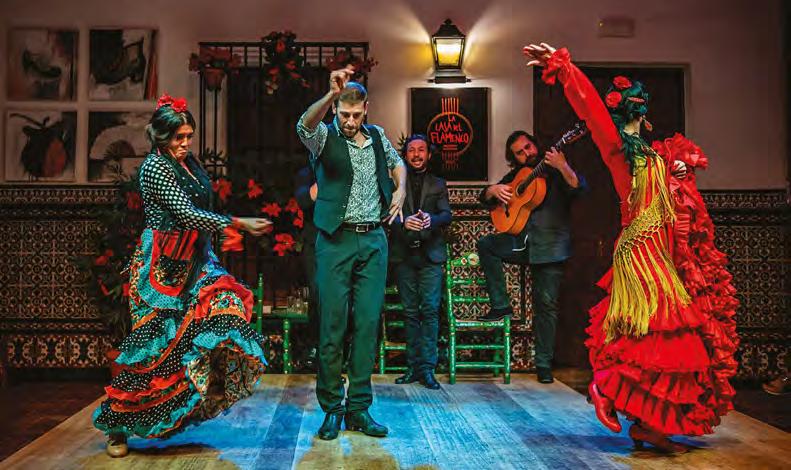
As soon as I arrived here in Seville, I headed straight for a tapas restaurant so I could indulge in my favorite food: pimientos de Padrón. Like so many Spanish tapas, it’s a deceptively simple dish — grilled peppers sprinkled with salt. It’s the quality of the ingredients — in this case, fruity peppers from Padrón — that elevates the simple to the sublime. After eating, I dropped my bags at my hotel before meeting Gulielmus in
the lobby. Tall, with sky-blue eyes, Gulielmus was my guide for a tour of Seville’s Cathedral and the Real Alcázar, a palace that’s still home to Spanish royalty. Seeing these two sights together particularly piqued my curiosity — in the past few years I’ve traveled extensively in the Middle East, and I wanted to know more about the Moorish influence that pervades Seville.
Gulielmus picked up on my interest quickly and took time to point out the ways the city’s architecture still reflects that period. My personal highlight was the cathedral’s bell tower, known as the Giralda. It’s the only surviving aspect of the mosque that once stood on this site and its Islamic intricacy harmonizes elegantly with the soaring Gothic glories of the newer cathedral.
For dinner, I looked for a tapas restaurant with a line — the best ones don’t take reservations and the length of the line is a good indicator of the quality. Tapas are a convivial cuisine, so it didn’t surprise me when a group of locals invited me to join them eating. It was a delightful end to my first day back.
I spent this afternoon taking a leisurely wander through the city. The narrow, winding streets and whitewashed walls reminded me of a souq, and once again I marveled at the way Seville’s Moorish roots continue to influence the city.
You can also see that heritage at play in a flamenco show, according to the city’s Flamenco Museum, which I visited early in the evening. I was there for a show, but reserved a bit of time to peruse
the exhibits, which examine the complicated mélange of cultures, including Moorish, which gave birth to flamenco. Then, I took my front-row seat just feet away from the three dancers, who performed both solo and together. They stamped, whirled, and clapped to the complicated beat. I was particularly taken by the lone male dancer — every inch of his body, from the arch of his spine to the longing in his eyes, conveyed the genre’s deep passion.
‘¡Buenos días!’ Seville chef Ruth welcomed me into her private
kitchen this morning for a cooking class. The menu featured two classic tapas: patatas bravas and pollo al ajillo (fried potatoes and garlic chicken). Ruth patiently took me through the two recipes, including how to make the allimportant sauces. I’ve tried to cook these sauces at home before, but they just weren’t the same. Now I know the correct blend of garlic, onion, cayenne, paprika, and sour cream, I’m excited to recreate a small taste of Spain once I’m back home.
We shared the meal on Ruth’s private terrace overlooking the cathedral and Real Alcázar. For dessert, she produced her homemade gelato and challenged me to guess the flavor. I was on
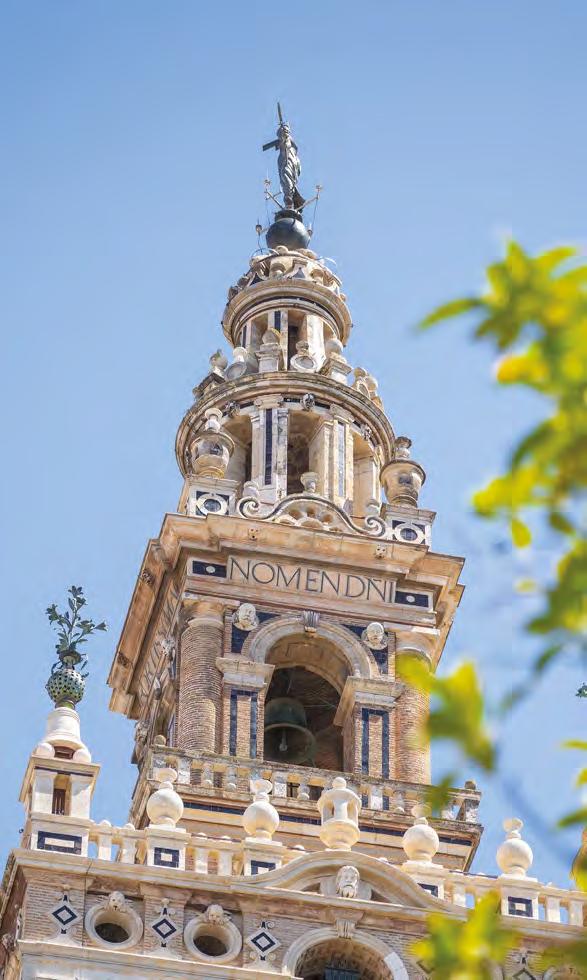
my third helping before I finally declared defeat and she revealed that it was orange and olive oil.
After lunch, I boarded a plane for Barcelona. In the cab from the airport, I rolled down the window and breathed in the briny sea air, scented with the garlic of a thousand kitchens. I’ll admit, I found myself a bit misty eyed at the feeling of homecoming.
My hotel sat right on La Rambla, the pedestrian thoroughfare in the heart of the city, where visitors flock. I love being in the thick of things, but for my first night back, I headed to Plaça Reial to meet with old friends over a plate of my beloved pimientos de Padrón.
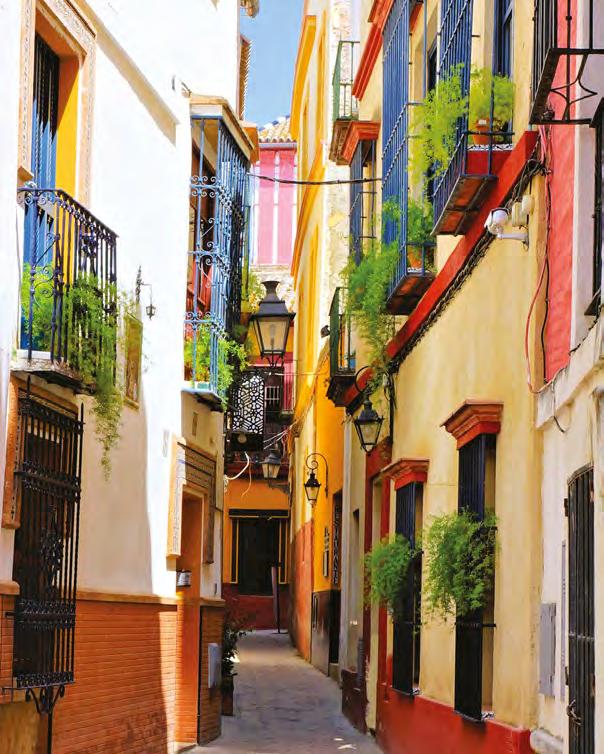

Just as Moorish influences pervade every aspect of a visit to Seville, architect Antoni Gaudí defined Barcelona’s cityscape, and I began today with a tour of some of his best-known works.
My guide, Marie, was a slim woman from Cognac with a pixie cut and a real passion for Gaudí. She started my tour at the playful Casa Milà, an apartment block that’s known for its organic Modernista aesthetic, including an undulating stone façade, chimneys that look like medieval knights, and iron balconies wrought into curves like tangles of seaweed.
I’d visited many times, but her
expertise threw new light onto the familiar structure. For instance, I didn’t know that the façade wasn’t a load-bearing part of the building, but instead a purely decorative curtain wall that allowed the architect to play with the fanciful shapes that define his work. The highlight — of the tour, of Gaudí’s career, and, arguably, of the city itself — was the Sagrada Família. Still unfinished, this extraordinary basilica is a showcase of the architect’s liquid, organic style, and I never tire of visiting. Here, again, Marie spotlighted features I’d never noticed before. When I visited in the past, I always looked up, my eye drawn by Gaudí’s signature soaring lines. But, this time, Marie directed my attention down to the sea turtles at

the base of the façade closest to the water (on the inland side, there’s a tortoise). I’d overlooked them until that moment.
Today, Marie took me on a visit to the Montserrat mountain range, an hour outside the city. Rising over the Catalan countryside like a stony forest of rounded pillars, the mountains are home to the Santa Maria de Montserrat monastery complex, which includes a royal basilica and an art museum sporting a who’s who of Catalan artists, including Dalí. You can take the funicular up the steep slope or even drive, but I opted to hike up one of the easier routes — experienced hikers can elect for a more challenging trail. The view from the monastery is entirely worth the journey, whichever route you take — panoramas of gentle green valleys, Barcelona, and the distant glint of the Balearic Sea.
Having reached the summit, we visited the tiny market on the peak and assembled a picnic of local foods, including goat’s cheese, and roasted nuts, to fortify ourselves for the climb down.
Gaudí colors (pictured) mosaic-tiled benches at Park Güell; (below) Hannah by the cathedral in BarcelonaIt was raining when I landed in Bilbao, so I spent a few hours in the Guggenheim Museum, exploring some of the world’s most impressive contemporary art. The museum is known for its swooping steel exterior designed by lauded postmodernist Frank Gehry, and I was particularly taken with The Matter of Time by Richard Serra. The undulating steel walls capture the non-linear nature of our perception of time, while echoing the museum’s renowned façade.
After a lunch featuring yet more pimientos de Padrón, I drove east through mist-wreathed mountains and rain-spangled fields. Arriving in San Sebastián just as the clouds broke, I checked into my hotel, where my room looked out onto the Bay of Biscay. I took a moment to admire the scene before heading out for my evening food tour.
San Sebastián is renowned for its gastronomy, from Michelinstarred restaurants (the tiny city boasts 19 of them) to the pocketsize bars that serve the Basque version of tapas, called pintxos.
My guide, Esther, explained how the city’s history as a 19th-century beach destination for royalty gave rise to the culinary culture that still flourishes today.
Together, we visited a handful of bars, nibbling their signature bites. I was astounded at the wide variety of options. There were traditional pintxos, of course: crunchy fried calamari, delicate tuna ceviche speared to a toasted piece of bread, and a gilda — a skewer of briny olives, pickled guindilla peppers, and salted anchovies. There were also more experimental dishes, including aspic around a softboiled egg. For dessert, I indulged in a rich bread pudding slathered in thick sweetened cream.
I abandoned the coast and drove into La Rioja, where vineyards stretch to the horizon. One of Europe’s oldest wine-making regions, it still produces some of Spain’s best reds. I was heading to Bodega La Rioja Alta, a traditional vineyard founded in 1890. There, sommelier Ana walked me through sampling the different

vintages on offer. I loved the Viña Ardanza, a medium-body red with notes of orange and black cherry. Ana explained that it was a blend of tempranillo and garnacha grapes and that the garnacha were grown at a slight altitude on goblet-pruned vines.
My tasting over, I’m now relaxing on my hotel’s terrace in the late-afternoon sunshine and sipping a glass of my new favorite wine. It’s a bittersweet feeling — it’s my last full day in Spain, but it’s been lovely to return to my second home again. It won’t be long before I come back again.
Flight time:
Seven and a half hours direct from New York City to Barcelona. When to go: A year-round destination, Spain is at its best in April, May, September, and October, with good weather and less crowds.
Start planning: Explore Seville and San Sebastián on your own trip to Spain.
View trip idea
855-435-1770

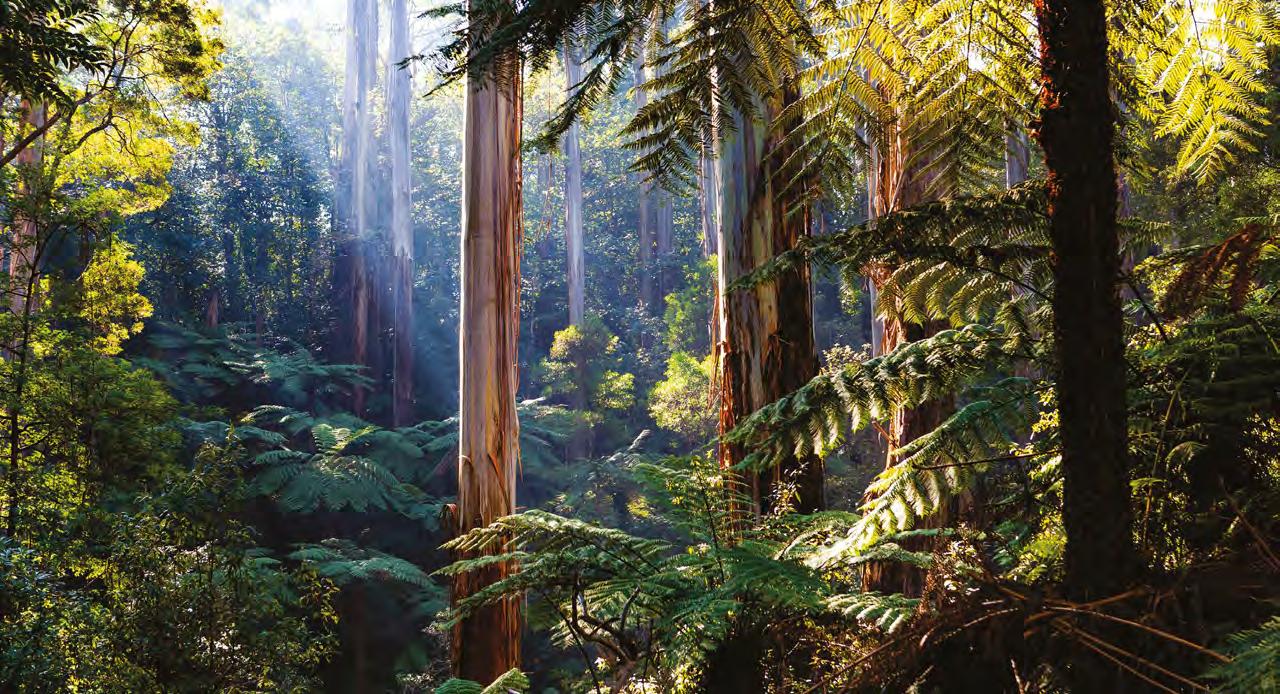
It’s the age-old question: beach escape or adventure break? When it comes to visiting Queensland, Australia, it can be tricky to decide how to divide your time between Daintree National Park’s wildlife-rich rainforest and the glass-clear waters and kaleidoscopic marine life out on the Great Barrier Reef and the Whitsunday Islands. Australia specialists Brooke and Jindy share two ways to experience Queensland, whether you’re more drawn to the feeling of the fresh sea breeze or the quiet hum of creatures big and small under the canopy of the rainforest.

When people think of Australia, it’s easy to picture the turquoise ocean crashing onto a balmy beach, the red clay of the Outback, or the rolling green vineyards. The rainforest is a part of Australia that can fly under the radar, but, in my opinion, shouldn’t be overlooked.
On Queensland’s coast you’ll find the Daintree Rainforest, an expanse that’s home to many endemic animal species and more flowering plants than the Amazon. Dating back over 130 million years, it’s
one of the oldest rainforests on the planet. Sir David Attenborough once called it ‘the most extraordinary place on Earth.’ I have to agree.
There are many ways to explore here. You could cruise down the Daintree River, watching out for the long snouts of crocodiles poking out of the water. Explore the rainforest at night, listening for the hoot of owls and the high-pitched chirp of bandicoots. Or, join an expert guide on a birdwatching walk, shaded by the giant leaves of umbrella trees, looking out for the
blue neck, exuberant plumage, and hornlike crown of the immense cassowary bird, which can grow to be 1.6 m (5 ft) tall.
The laidback beach town of Port Douglas borders the rainforest. Quieter than Cairns, it’s where I prefer to base myself while exploring this region.
You can also stay in the heart of the rainforest at a luxury wilderness lodge, sleeping in well-appointed treehouses perched over the forest floor. Fall asleep to the sounds of birds and wildlife colliding to create a natural white-noise machine.



From the variety of colorful coral formations gently swaying in the ocean currents to the marine life thriving among them and the pristine white-sand beaches of the surrounding islands, there’s so much that draws me to the reefs and islands of Queensland.
The Great Barrier Reef is a UNESCO World Heritage Site, standing out as the world’s largest reef system. I swam with rainbow parrotfish, wide-winged manta rays, and sea turtles that seemed to gracefully dance through the water. Seeing a dolphin leap out of the ocean against the backdrop of the setting sun took my breath away. Of course, you can snorkel or dive among a cascade of flamboyant fish and playful marine life, which I highly recommend, but if you think the only way to explore the reef is from under the water, then think again.
You can take to the sky and see the aptly named Heart Reef from a helicopter or seaplane. I could also arrange for you to cruise by catamaran to the outer fringes of the reef, or sail on board a private yacht that will whisk you around the Whitsunday
Islands, stopping off at a quiet beach for a luxurious picnic lunch on the sand with no one else in sight.
One of the most unusual ways to experience the reef is to sleep floating above it. After visiting an underwater observatory and getting a chance to snorkel on the reef, you’ll snuggle into your Reefbed, gazing up at a sky painted with stars while you’re lulled to sleep by the waves lapping the hull of the private pontoon.
Many first-time visitors don’t realize there are 900 islands scattered along the Queensland coast. Among them are the 74 isles that make up the Whitsundays. I love the variety of places to stay ashore here — you can unwind at a spa hotel, escape to a chic eco retreat, or invite friends to join you at your luxe villa at qualia’s Beach House on Hamilton Island.
You’d be forgiven for thinking the reef is for water lovers only, and that landlubbers are better suited to the rainforest, but this isn’t the case. While avid swimmers will appreciate the reef, hikers can lace up their boots and take a ramble ashore. The fact that so many of the walks here have ‘lookout point’ in the name is a testament to the staggering views that reward you at the end of each trail.
I suggest walking up to the Hill Inlet

Lookout, where you can see swirling sand formations in the teal waters below. For a longer jaunt, there’s a three-day trek known as the Great Whitsunday Walk, which winds under towering trees and past trickling creeks before arriving at the palm-studded sands of Airlie Beach.
The ideal time to visit the reef is May to October when the water is clear, the sun is likely to shine, and, best of all, you’ll avoid the rainy season. It also aligns with the mild dry season in the rainforest.
∞ Visit the reef and rainforest of Queensland as part of a wider trip that takes in Australia’s many other highlights. View trip

Beyond South Africa’s cities and safaris is a driving route that winds through countryside, mountains, semi-desert, and coastal communities. South Africa specialist Harriet buckles up.



Stretching from Mossel Bay to the Storms River mouth in Tsitsikamma National Park, the Garden Route is South Africa’s best-known road trip for a reason. With landscapes switching between mountains, semi-desert, and untamed coast, an abundance of wildlife both on land and offshore, and oceanside towns bursting with personality — not to mention the delectable food — it’s a drive to relish over several days. South Africa specialist Harriet shares her recent experiences behind the wheel.

Harriet first visited South Africa as a teen on a six-week tour with her brother’s rugby team. She’s kept returning since, exploring KwaZulu-Natal, the Drakensberg Mountains, and the Western Cape, including the Garden Route.
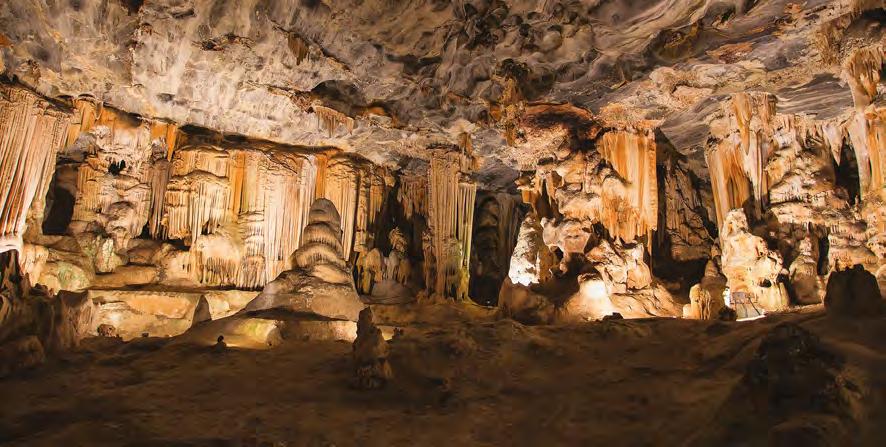
Rounding the corner of the winding mountain road, the landscape opened out before me and an expanse of blue glittered in the distance — the Indian Ocean. I’d spent the last few days in the semi-desert of South Africa’s Klein Karoo region, where ostrich farms pepper the arid landscape and the great humps of the Swartberg Mountains form a backdrop to the town of Oudtshoorn. This vision of blue contrasted nicely with the reddish rocks disappearing in my rear-view mirror.
While Oudtshoorn isn’t technically part of the Garden Route, it makes sense to base yourself there for a couple of nights on your way over from Cape Town, the Cape Winelands, or the whale-watching hub of Hermanus. A town in name rather than size, it benefited from the lucrative 19thcentury ostrich-feather trade. The giant birds are still farmed here, but more for meat than the feathers that were once used to adorn women’s hats.
In fact, I’d spent last night at a guesthouse on a working ostrich farm. La Plume looks out over the rolling farmland
and its feathery inhabitants, and the building has retained a traditional style. While here, you can tour the farm to learn about and meet your ostrich neighbours.
I also recommend driving out to the nearby Cango Caves. You can join a guided tour of these cavernous subterranean tunnels, which are punctuated by huge stalagmites and stalactites that have built up over millennia. Simply taking scenic drives through the mountains is another bonus of staying in this region — you’ll find plenty of viewpoints to stop at for photos or picnics with far-reaching vistas over the peaks.
That said, I was excited to reach the coast, the inland heat gradually subsiding as the ocean breeze cooled the air. It’s a coastline that never fails to take my breath away. Curved clifftops are pummeled by waves in some parts, while in others, sheltered bays embrace huge swathes of white-gold sand, many of which remain empty for most of the day.
Along the way, you’ll also have a choice of characterful seaside towns to visit or

stay in. If you’re a golfer, George is a good option, home to several of the country’s best courses.
For a more natural setting, Knysna sits on a lagoon hemmed in by two headlands and backed by indigenous forests. Parts are included within Garden Route National Park, where you can explore hiking trails while keeping a lookout for endemic wildlife like the Knysna loerie (or turaco), Knysna dwarf chameleon, and the rare Brenton blue butterfly.
My destination for the next few days was Plettenberg Bay, an affluent beachside town sandwiched between a large crescent of white sand and the plunging forest-clad cliffs of the Tsitsikamma Mountains.
Whales are often visible from the clifftop trails, or you can join boat trips to see them up close. ‘Plett’, as locals call it, is also a popular holiday spot for Capetonians, and its beachfront is lined with shops, cafes, and restaurants that keep them well fed and watered. I especially recommend the seafood here, which is as fresh as it comes.
Speaking of good food, I was in luck when I arrived at Emily Moon River Lodge, a 16-suite boutique hotel overlooking a meandering river, wetlands, and distant mountains, and my home for the next couple of nights. I just so happened to check in as the lodge was preparing to host a chef demonstration. Of course, I booked myself a table right away.
What followed was eight courses of exquisite dishes, from T-bone steak to a seafood broth, each paired with a complementary South African wine. And, it cost no more than a two-course meal back home — the food and drink in South Africa is incredible value.
During my stay in Plett, I headed out with a local guide for the day to explore nearby Tsitsikamma National Park. Here, you’ll find temperate forests bursting with endemic flora and fauna, deep gorges carved by the turbulent Storms River, and a rockstrewn coastline that rises to headlands and falls to sandy coves.
It’s definitely best to explore this natural splendour with a guide who knows all about the region’s flora, fauna, and geology. They’ll tell you about the significance of what you’re seeing and plan your day according to your interests.
If you like a touch of adrenaline, there are river-tubing trips, canopy tours high in the trees, and one of the world’s highest bungee jumps — 216 m (707 ft) — off nearby Bloukrans Bridge (I politely declined this option, but we paused to watch people
braver than me take the plunge down into the valley).
If, like me, you prefer a gentler pace, there are walking trails aplenty, many taking you along boardwalks and across sturdy rope bridges spanning the river mouth and coastline.
The trail we followed also brought us to what’s known as the Big Tree, a dizzyingly high 800-year-old yellowwood that stretches 36 m (118 ft) upwards, easily piercing the canopy to reach the sky. While protective ropes stop you from hugging its 9-m (30-ft)-circumference trunk, you can stand close enough to appreciate its size, head tilted upwards and mouth agape.
As you explore on foot, you might come across vervet monkeys swinging and squabbling among the branches, rock hyraxes scurrying on the cliffsides, chameleons and geckos expertly camouflaged against the foliage, and so many birds that I gave up writing down their names. They provided an enchanting orchestral backdrop.
But, my standout wildlife encounter occurred in the most unlikely of places. We’d just found a space in the park’s oceanfront parking lot when my guide beckoned me over, pointing excitedly towards the turquoise waves.
‘Can you see it?’ he asked. ‘Right there, in a few seconds it’ll come back up.’ As soon as he’d finished speaking, a plume of water shot into the air in the distance, and I made out a dark outline, huge even from land. A southern right whale.
It was one of those moments that you
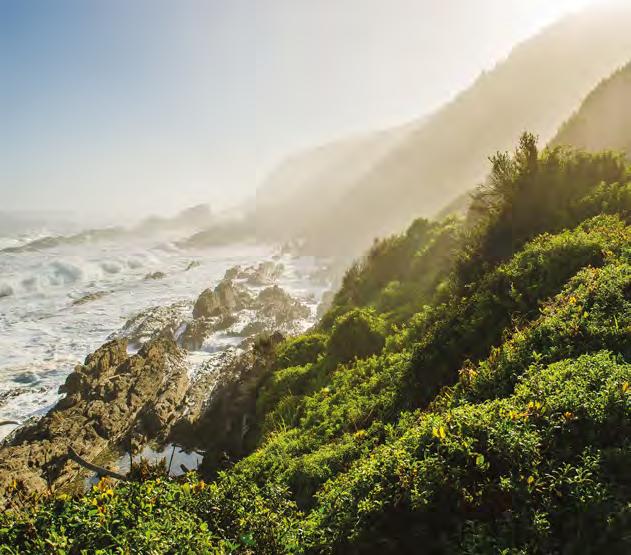
can’t quite believe is happening. I’d been out on whale-watching trips twice before in South Africa and failed to see any, so to spy one here, from the middle of a parking lot and with no expectation of an encounter, was an experience I’ll be reliving and retelling for years to come.
We spent around an hour gazing out to the horizon, using our cameras to zoom in for a better view as the whale was joined by a few others in its pod, their tail flukes emerging every so often above the waves.
My fate was sealed during that captivating hour: I’d be returning to the Garden Route — and soon. I knew that this drive had hooked me, and I was ready and willing to be reeled in again.
Flight time:
Between 20 and 39 hours from the US to Cape Town, depending on your departure airport.
When to go:
September to April for the warmest, sunniest weather, with whales present from August to November. It can get busy between December and February, so visit outside these months for a quieter trip and wider choice of hotels.
Start planning:
You can take a scenic drive along the Garden Route, including time in Cape Town, on a trip across South Africa.
View trip idea
855-320-9545
• a city break in Cape Town before your road trip, hiking up Table Mountain, exploring the food scene on a walking tour, and visiting the Cape Winelands
• a safari in Kruger National Park after your road trip, catching a flight from Port Elizabeth to a private reserve bordering the Kruger to spot big cats, elephants, giraffes, and many more species
• a tour of KwaZulu-Natal, if you’re on a lengthier trip, delving into the history surrounding the Battlefields area and exploring sites like Isandlwana and Rorke’s Drift with a local guide who’ll bring past events to life


When Katy became a wheelchair user, she set herself the goal of traveling from the UK to the US with her family. Specialist Dean got to work creating a trip with accessibility in mind.
Katy Deacon & her family, Scott, Lucas & Darcy
In early 2020, I became a wheelchair user and, at first, it felt like my world shrank. Then, I attended a course at home in the UK for people with spinal injuries and it motivated me to think differently and challenge myself to see more of the world. First on my list was the US. I’d been watching a lot of The West Wing, so, naturally, Washington D.C. was calling to me. I was apprehensive, but after months of planning with Dean, off I went, along with my husband, Scott, and children, Lucas and Darcy.

Dean, USA & Caribbean specialist
Research is key to every trip I plan, but even more so for Katy’s. There was a lot to consider, from finding accessible rooms during Boston Marathon week to triplechecking the experiences I’d suggested were step-free. Katy was really open about her needs, so it was a collaborative effort. I remember her telling me that she often couldn’t take part in activities during family holidays due to accessibility barriers, so I made it my goal to build a trip where she didn’t have to miss out on anything.
I knew I’d face challenges during my travels, so I spent a year preparing. I learned how to navigate busy cities in my chair and went to a disability center to practice getting around an airplane. As a former aircraft engineer, it was strange to feel so worried about flying, but the training really helped.
After a successful flight from London and a waffle-filled
introduction to American breakfasts, we took a trolley tour of the capital’s main sights. They were instantly recognizable from The West Wing, but what I didn’t expect was how spacious the city felt. With no high-rise buildings or tall trees interrupting it, the sky seemed endless.
During the tour, I found our visit to the National Museum of the American Indian particularly poignant. The building is a great curving structure designed to look like rock sculpted by the wind.
We spent a good while meandering around the exhibits and learning about the country’s complex history —
one that’s so entangled with that of the UK.
On our last day, I decided to rest up in the hotel while Scott took Lucas and Darcy to the zoo. Dean had factored in a lot of free time during our trip — more than I initially wanted. It turned out to be a sensible decision, allowing me to make the most of the days we did have activities booked in.
Bed for the night: I liked the Fairmont’s location — just on the edge of historic Georgetown and near the White House.
We didn’t want to spend hours driving, so we took the train to New York. They used a clever winch system to raise me up to train level and all the staff were fantastic throughout.
I’d been to New York City as a teenager, so I was eager to share its exuberance with my own children.
We packed a lot into our four days here. My standout memories have to be the memorial gardens at Ground Zero (which were incredibly powerful), taking in the thrillingly chaotic atmosphere at Times Square, and spending a few hours peacefully ambling through Central Park.
My daughter was so taken by the city that she was inspired to base a creative writing assignment around it at school, winning the Head Teacher’s

Award as a result. It made me want to show my children more of the world.
Bed for the night: It was just a short taxi ride from the city’s main sights to the Shelburne Sonesta, and the porters were extra helpful when I arrived.
Exhilarating as the city was, we were ready for the calmness of Cape Cod, spending our days at the beach, flying kites in the sea breeze, and eating some of the best seafood around.
It’s hard to come by accessible beaches, but the hotel we stayed at partners with a local charity that provides all-terrain wheelchairs. It was so special to spend time with the kids as they played in the refreshing spring sunshine.
Bed for the night: Sea Crest Beach Hotel is right on the waterfront, and I loved its
coastal-themed decor.
Even though Boston is such a historic city, it felt like accessibility had been designed into everything here rather than simply being an afterthought.
One example was the Duck Tour we took where you travel around the city in an amphibious bus-boat hybrid. They removed a couple of seats to accommodate my wheelchair and off we went. Along the way, we saw preparations for the Boston Marathon, the historical Old State House, and the Charles River, which we eventually splashed down into.
Scott was also really keen to catch a baseball game in Boston, but Dean took it one step further and arranged for us to take a tour of Fenway Park beforehand. It’s the oldest ballpark in the country, and we loved hearing how it had evolved over the years.
The game itself was electric and we were completely hooked, waving our giant foam fingers and munching on overflowing tubs of popcorn. Much to our delight, the Boston Red Sox won!
Bed for the night: I found The Boxer Hotel’s location ideal for exploring Boston’s historic streets. It also had an accessible sidewalk outside leading straight to the North End.
Be open: Let your specialist know about the key barriers you may face on your trip so they can prepare well in advance.
Practice beforehand: Whether it’s testing out airplane seats or venturing into big cities, build up your confidence by practicing common travel situations before you go.
Stay positive: Not everything will go to plan, but there’s almost always a solution and your specialist is just a phone call away.
Get me there: ∞ If you’d like us to design an accessible trip, our specialists can help you to explore many destinations across the globe.

Letters, photos from your travels, and questions for our specialists: we love hearing from you.
@AudleyTravel and #TheAudleyWay editor@audleytravel.com

‘Where’s a great place to travel with my whole family this summer?’
HAYLEY, VIA INSTAGRAM

Global Travel Advisor Chloe says: I suggest visiting Scotland — the weather is typically warm but not too hot and there are plenty of activities for children. A highlight is exploring the Rothiemurchus Estate, a sprawling wilderness of lochs, mountains, and glens. You can visit with one of the estate’s rangers or take a ‘heilan hairy coo’ safari and feed the park’s red deer. If you’ve got very little ones, you could let the children take the wheel in one of the miniature electric Land Rovers. Or, if you prefer legendary animals to real ones, visit the Loch Ness Centre to learn about the elusive Nessie. We can also arrange a private bagpipe experience that includes a chance to try the renowned instrument for yourselves.
Linda and Graham Abbott shared photos from their recent 26-day trip to New Zealand. From soaring over the Southern Alps by helicopter to cruising Doubtful Sound and boarding the TranzAlpine train, their days were action-packed.


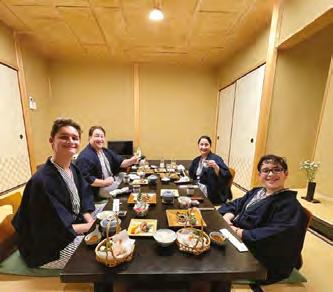
‘We decided on Japan as a family during the pandemic — I’d ask everyone what their top countries to visit were and Japan was always number one. A highlight of our trip last spring was the tea ceremony in Kyoto, where we wore kimonos. We picked every element of our outfits — it was hard to choose from such glorious colors and patterns.’
Audra Priluck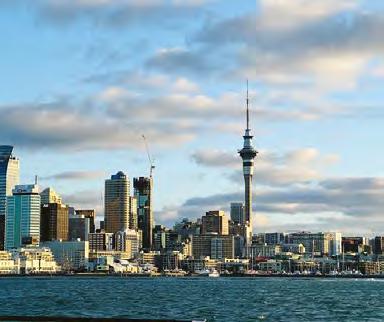

Audley clients Pam & David Rogers: ‘Reading Layla’s article about her trip along the Nile aboard Historia in your last issue brought to mind our very contrasting eight-day journey on a dahabiya, which Audley arranged for us back in 2011.
Our dahabiya, a wooden sailing boat, contained just a dozen passengers. Unlike the bigger boats, there was no dining room on board — all the Michelin-quality meals were taken on deck, well shaded from the sun.
The dahabiya’s size meant it was able to go where the larger ships could not. On a number of occasions we pulled into small riverside beaches, once to
visit the home village of one of the crew members. We met his family and friends, who very kindly invited us into their houses and showed us around the nearby farmland.
On another occasion, we stopped to swim and paddle in the Nile. While there, a local farmer arrived on his donkey wondering what was going on. He stopped for a while to chat with our skipper before departing with a cheery wave on said donkey.
However, the main highlight was probably the day when they cut the engine and unfurled the sails. It was lovely just sailing along, the only sound being the lapping of the river


against the boat. Although visiting the temples and tombs along the Nile was wonderful, it was great to be able to relax away from the hubbub. Then, on arrival in Aswan, we were treated to a visit to the Botanic Island and a camel ride across the sand dunes to a Nubian village.
The large ships are all very well, but for peace and quiet, as well as the chance to meet with the locals, you can’t beat a dahabiya!’
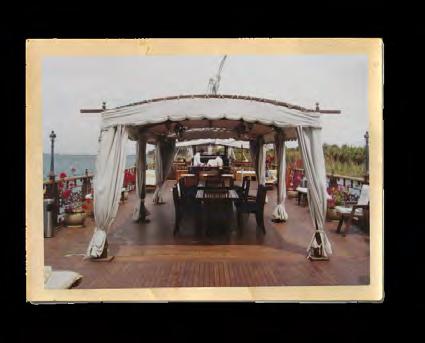
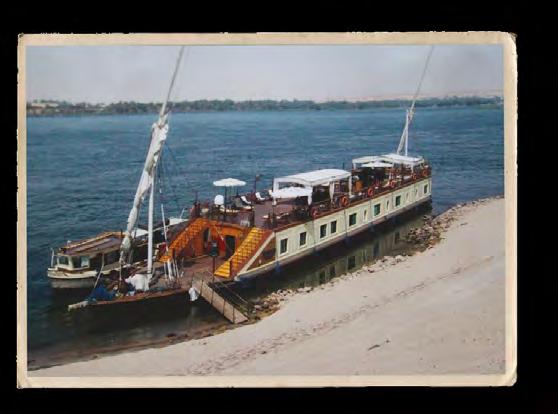
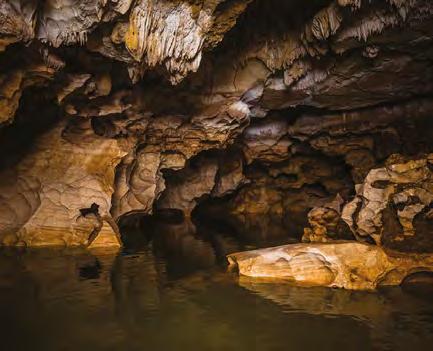
The dark, twisty caverns in the Actun Tunichil Muknal Cave echo eerily as you climb and swim, knowing Maya sacrifices once took place here.
Snorkeling the reefs off Ambergris Caye reveals an underwater world brimming with rays, turtles, and vivid fish.

Flying above the perfectly spherical Great Blue Hole lets you take in its scale and eye-catching colors.
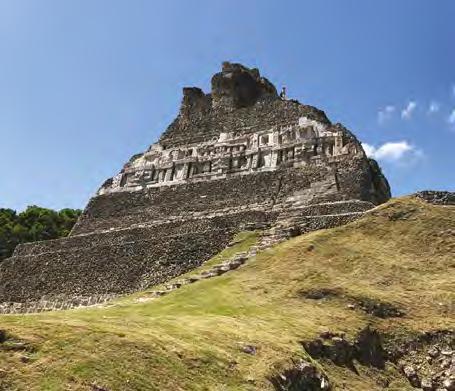
Well-preserved frieze carvings and stepped temples are on display at the Maya site of Xunantunich.
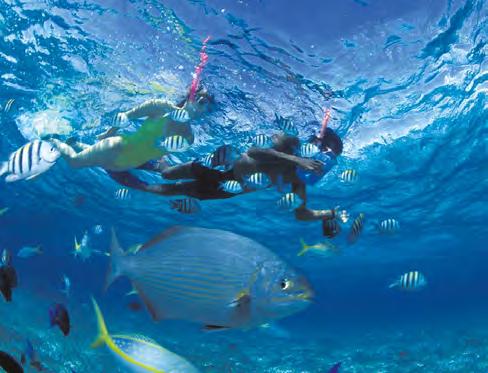

‘Jungles, reefs, sacred caves, and Maya cities — wherever you are in Belize, your senses tingle as you connect with nature and the country’s mysteryshrouded past.’
Inspired? Contact Nik or one of our Belize specialists on 855-234-5097

Howler monkey calls reverberate through the jungle canopy at Lamanai Outpost Lodge, which is set beside a lake amid the remnants of a Maya city.
Navigating small rapids while river tubing from Black Rock Lodge gets your adrenaline pumping as you take in the jungle scenery.


Traditional Garifuna rhythmic drumming creates a soundtrack as you dine on fragrant fish stew.
New Zealand’s cinematic landscapes, bountiful wildlife, and generously stocked wine cellars make it hard to narrow down where to visit. But New Zealand specialist Shea has done just that, sharing three of her favorite places in the country, from the deep inlets of the fiordlands to the wineries dotted across laidback Waiheke Island.

Kaikōura is the first place in New Zealand that made me feel completely overwhelmed by nature (in a good way). Gently rolling emerald hills meet an undulating coastline where boulders rise like stalagmites from the sea, all backed by snowy mountains in the distance. The marine life here is abundant. Spot New Zealand fur seals waddling along the beach or enormous sperm whales breaching offshore. Seeing it all from above can be as easy as flying by helicopter to the top of Mt Fyffe, or as joyously challenging as making the 18.5-km (11.5-mile) return trek to the summit.
Cutting into the farthest reaches of the South Island, the glacier-carved fiords of this aptly named national park are best explored by boat on either a day trip or overnight cruise. Navigate the length of Milford Sound, where you could see up to 10,000 waterfalls pouring down the cliffsides, depending on rainfall, or sail the quieter Doubtful Sound as bottlenose dolphins frolic beside your boat. I suggest staying aboard overnight so you can watch the sun set behind the surrounding snow-capped granite peaks and ancient beech forests, soaking in the silence.
Inspired? Contact our New Zealand specialists on 855-775-6388.
Verdant vineyards overlook white-sand beaches and turquoise waters on this relaxed island outpost. Despite being only 30 minutes from Auckland, just across the harbor, Waiheke feels worlds away. It became immediately clear to me why it’s known as ‘the island of wine’ — there are nearly 30 wineries here, many offering tastings and alfresco dining with views over the Hauraki Gulf . Beyond the wine glass, though, you could hike a coastal path, pedal along the Rangihoua mountain-bike trails, explore the coast by kayak, or browse the many local art galleries.

Explore New Zealand